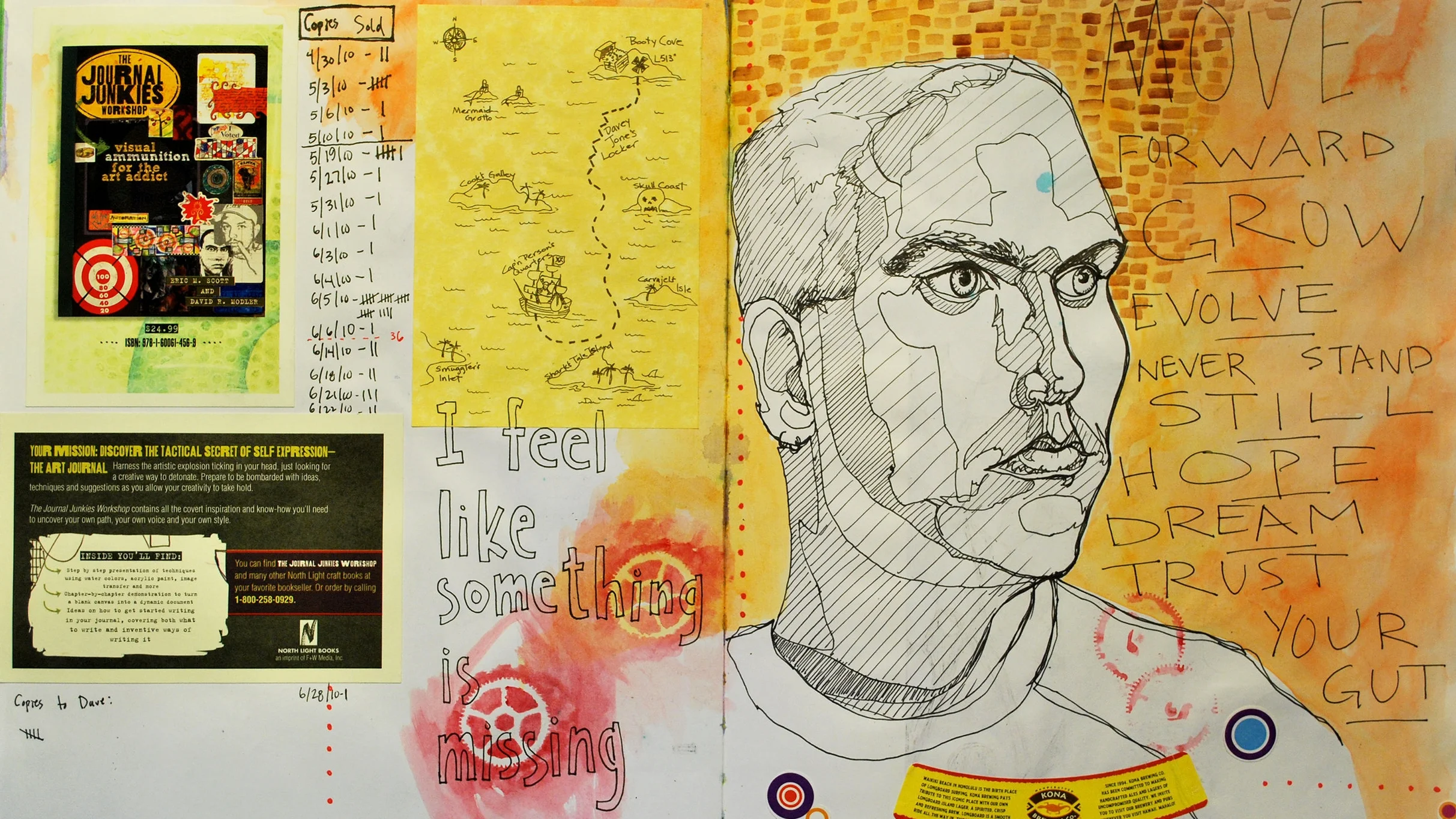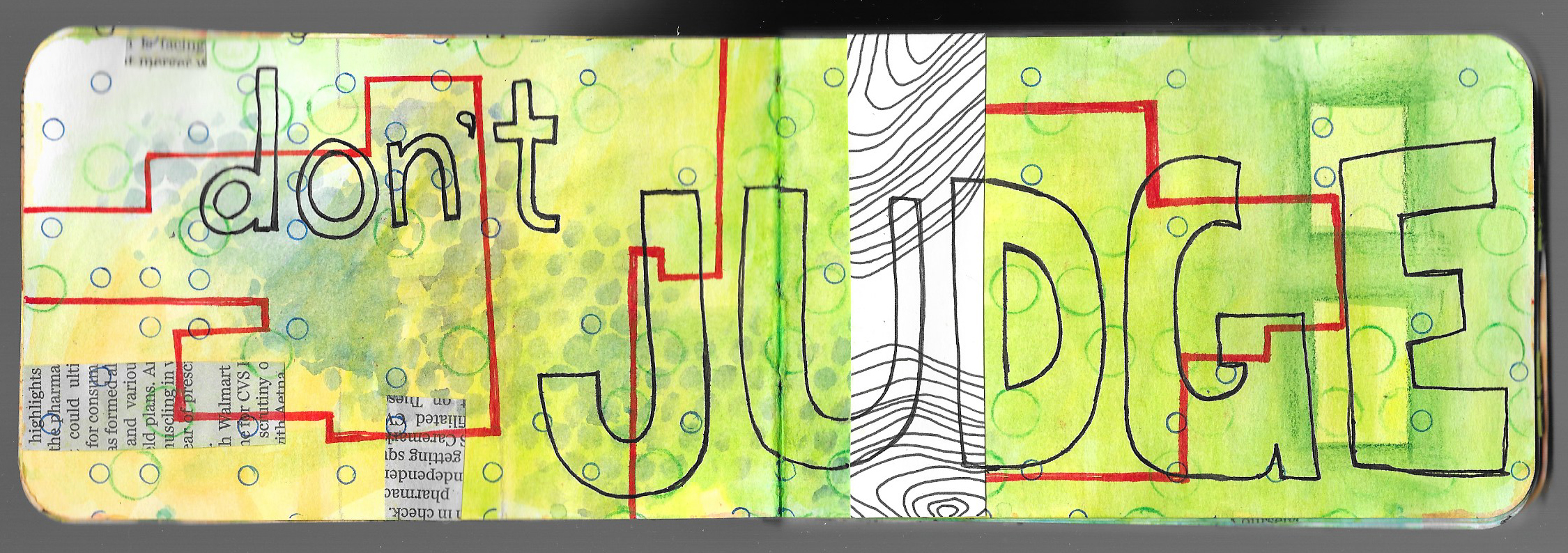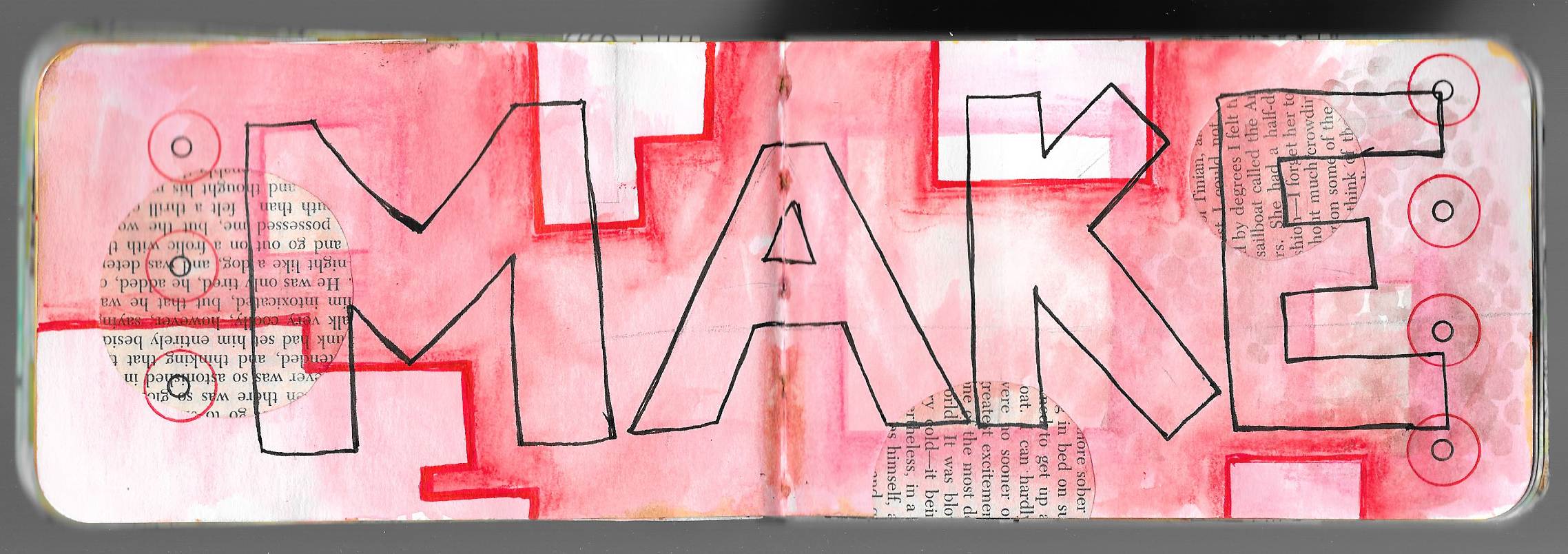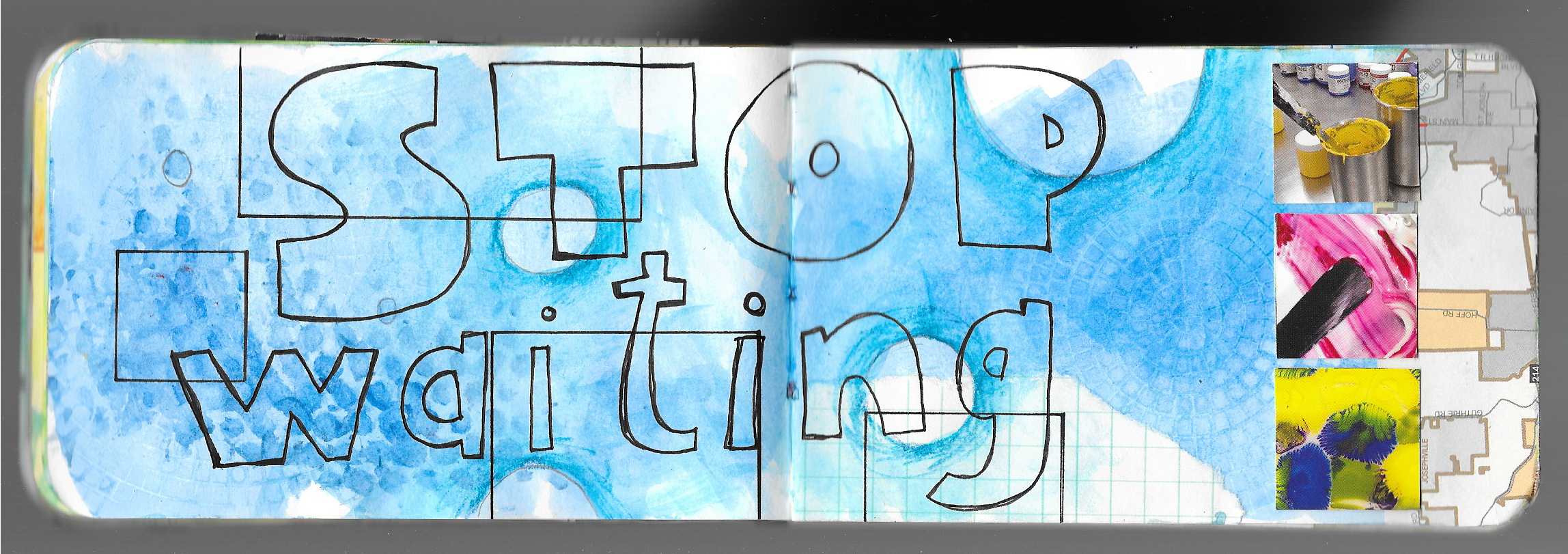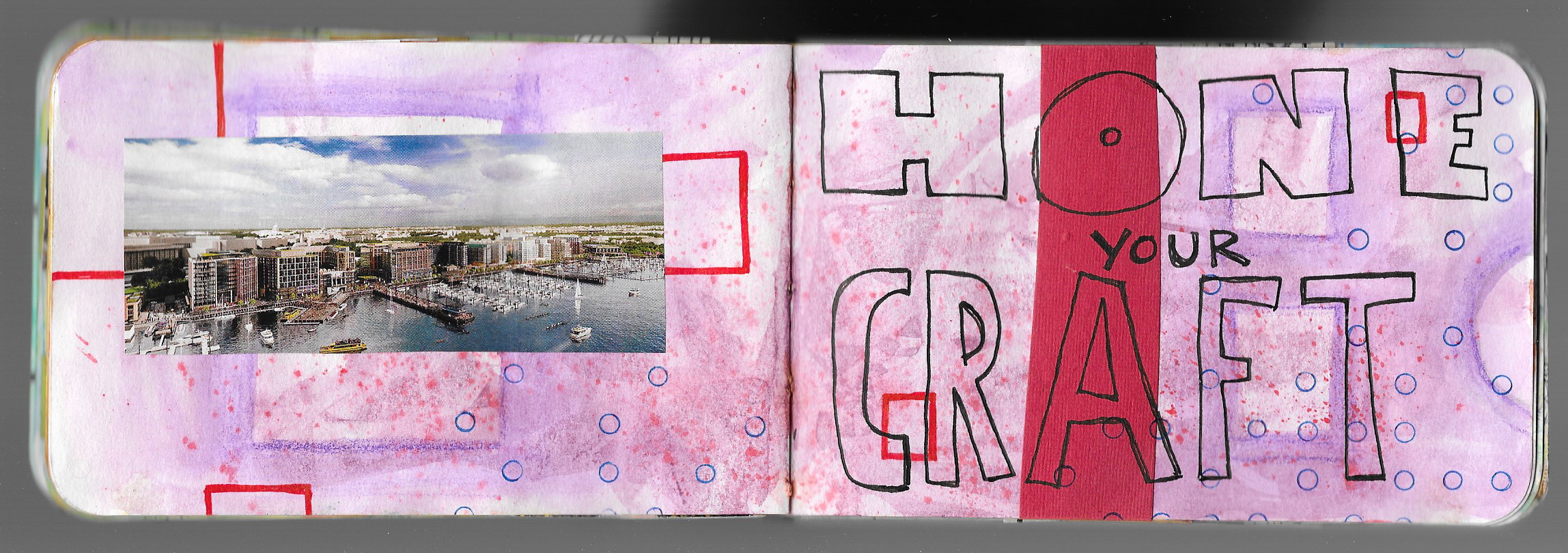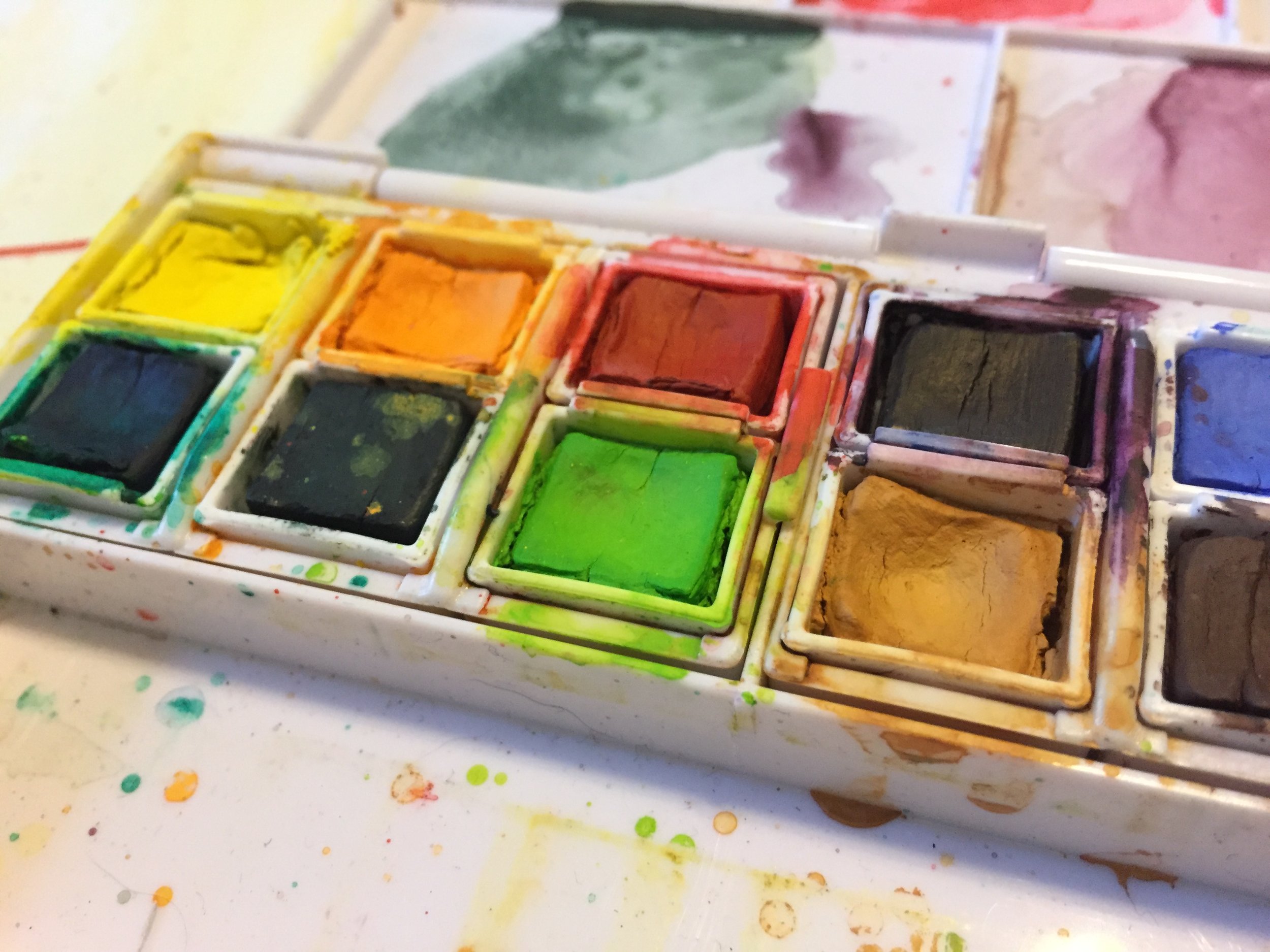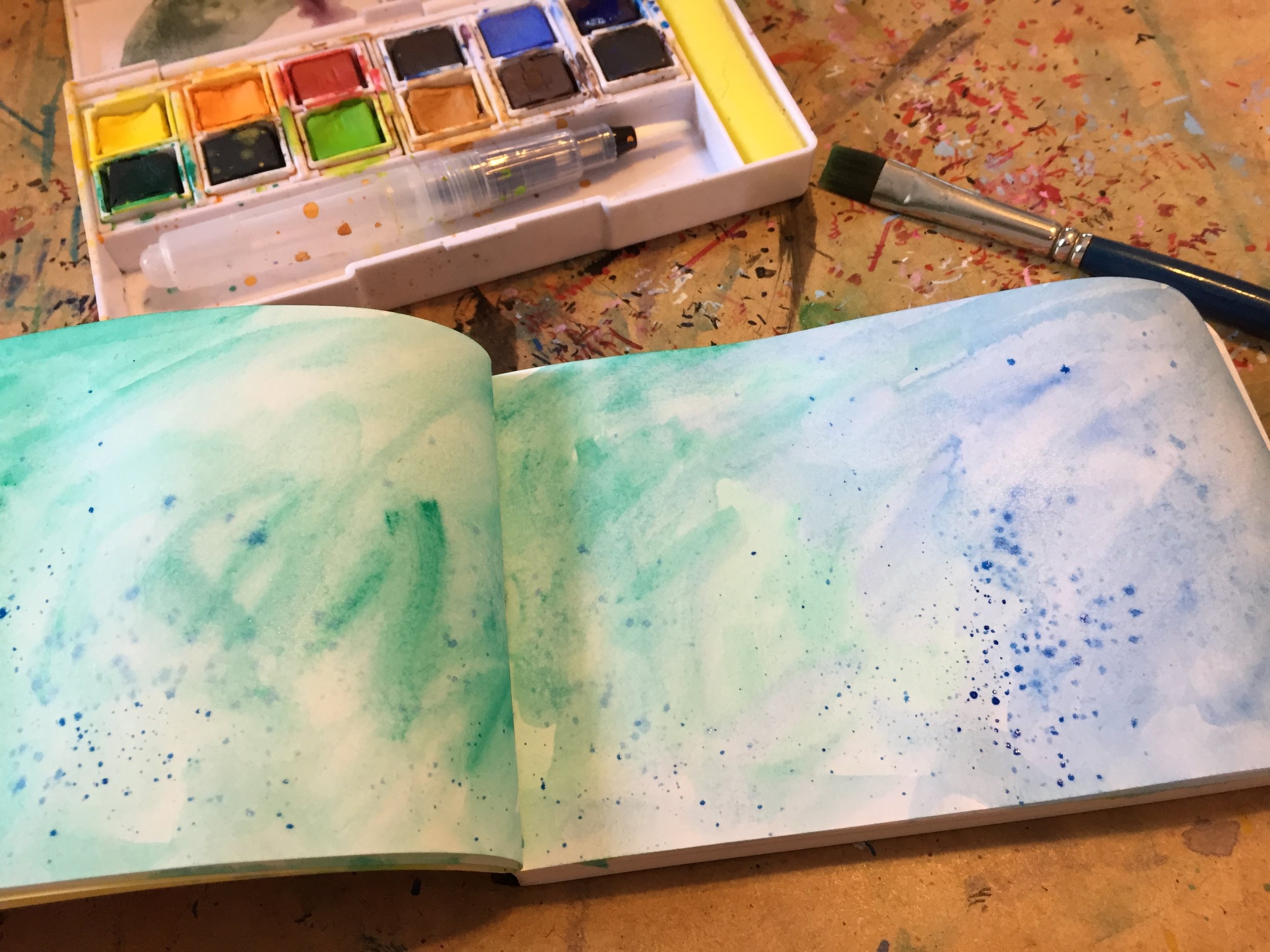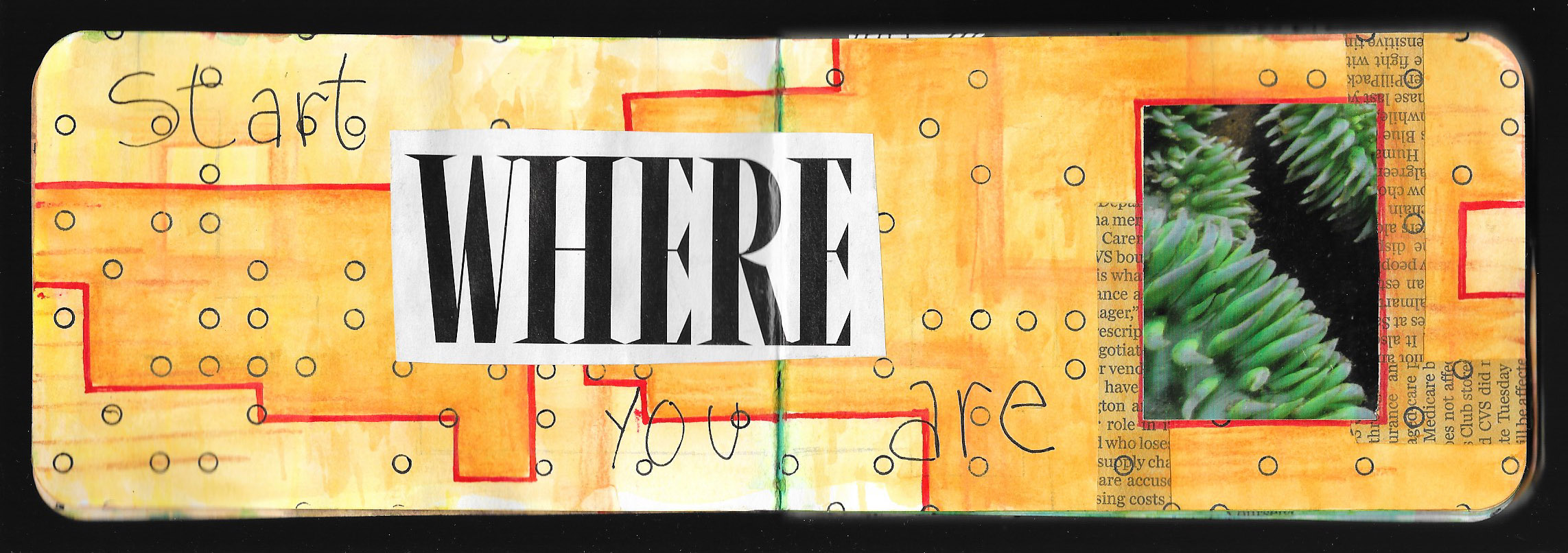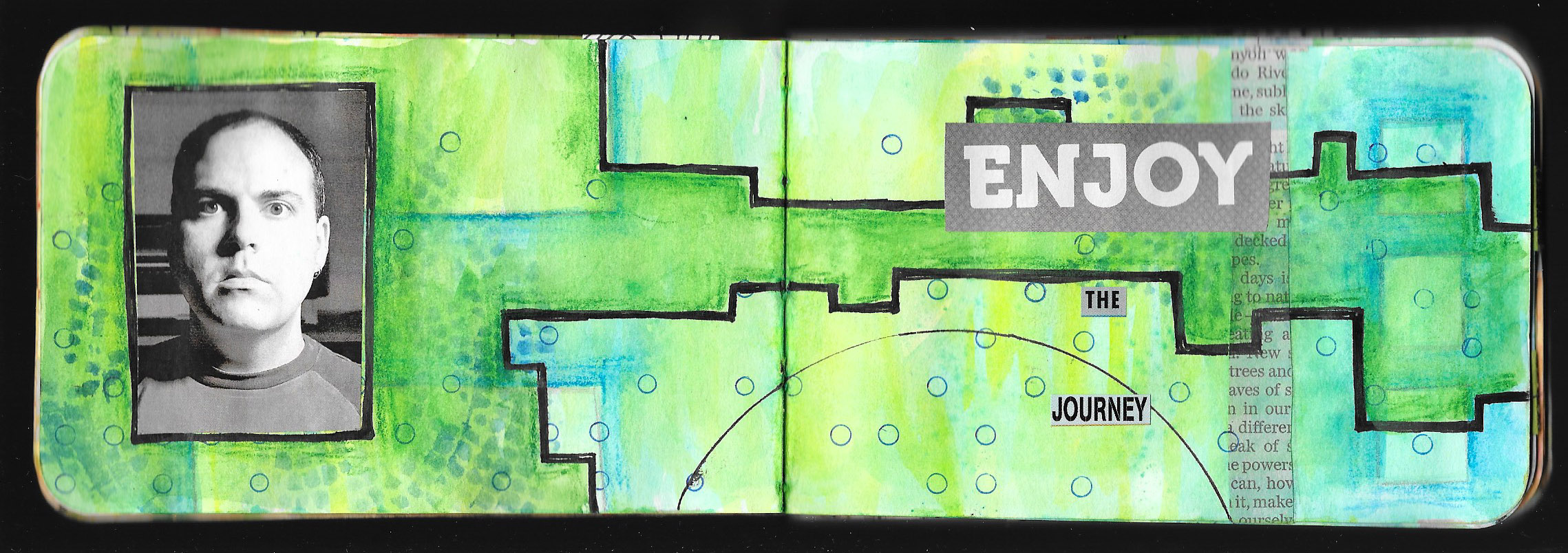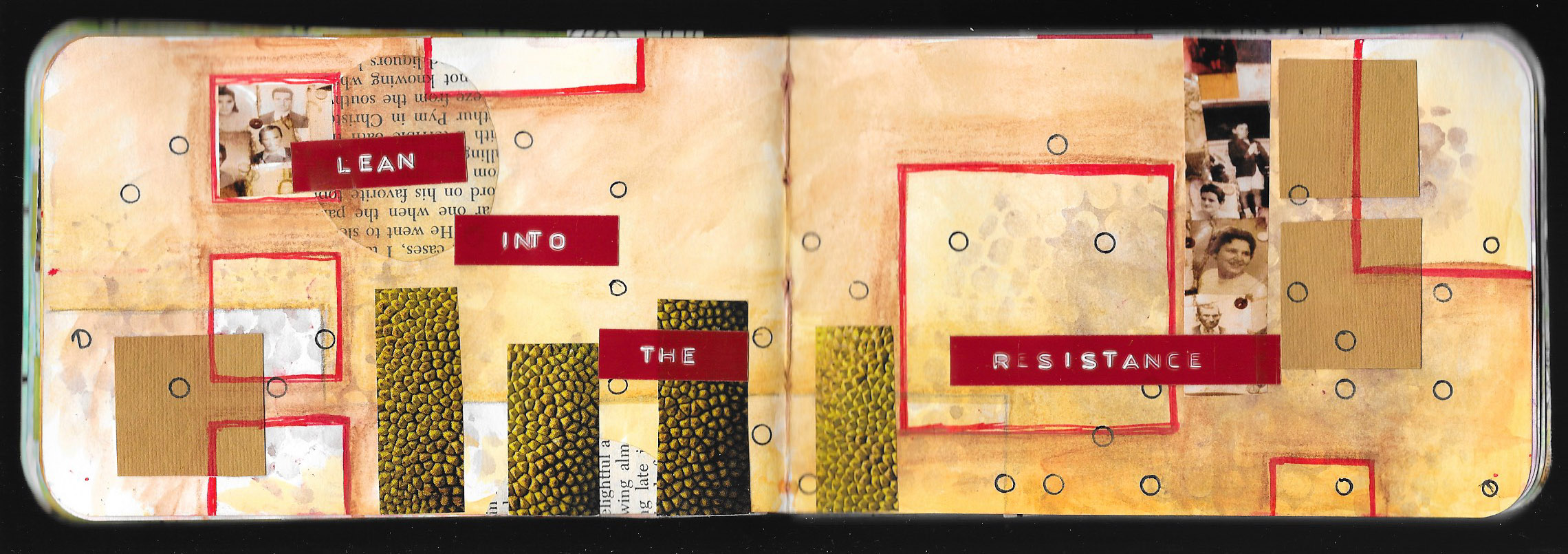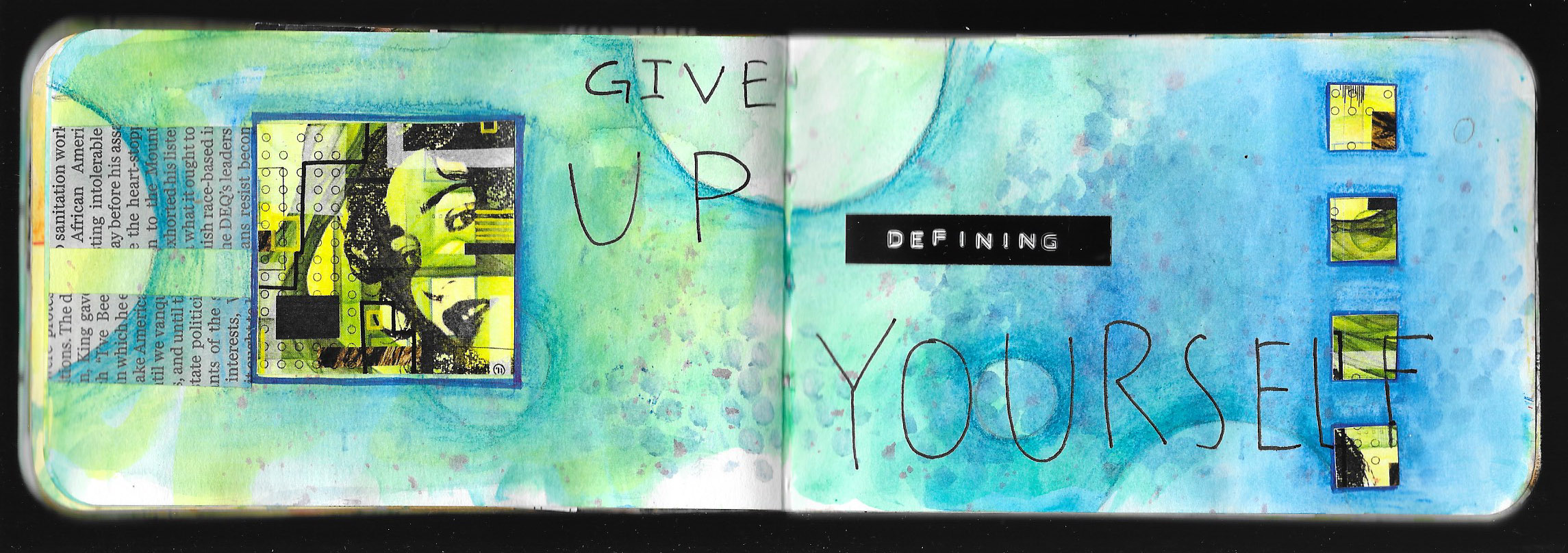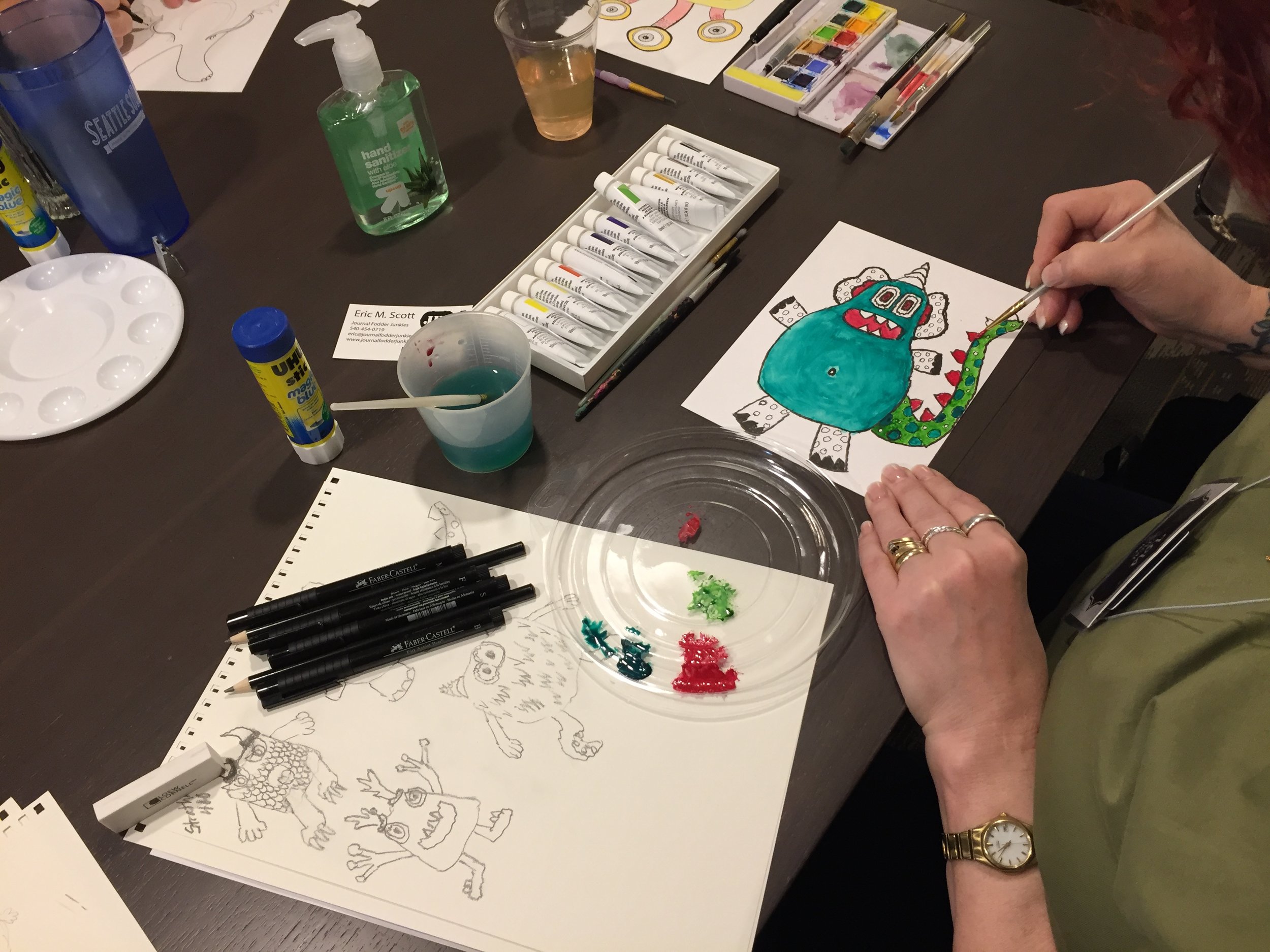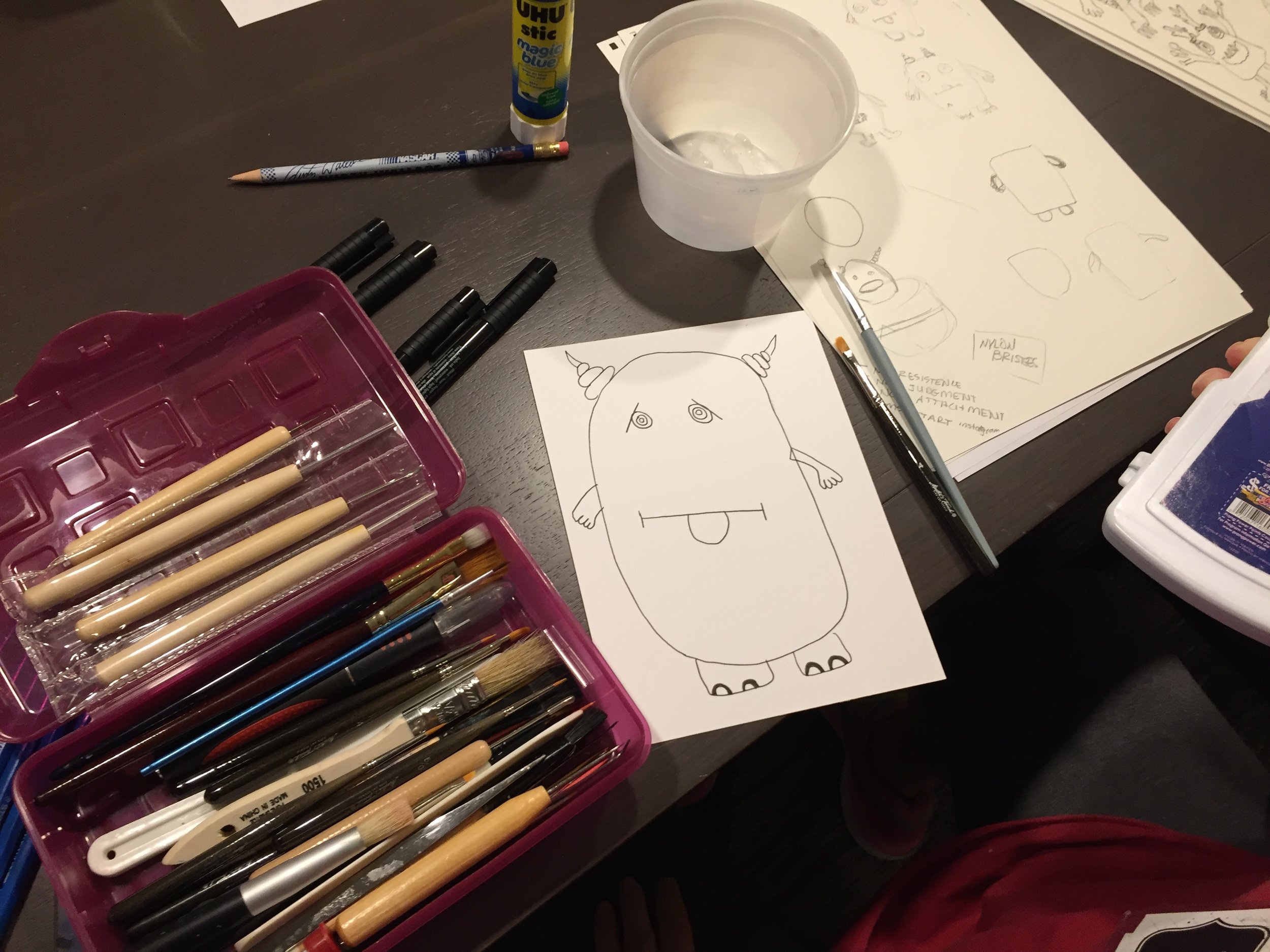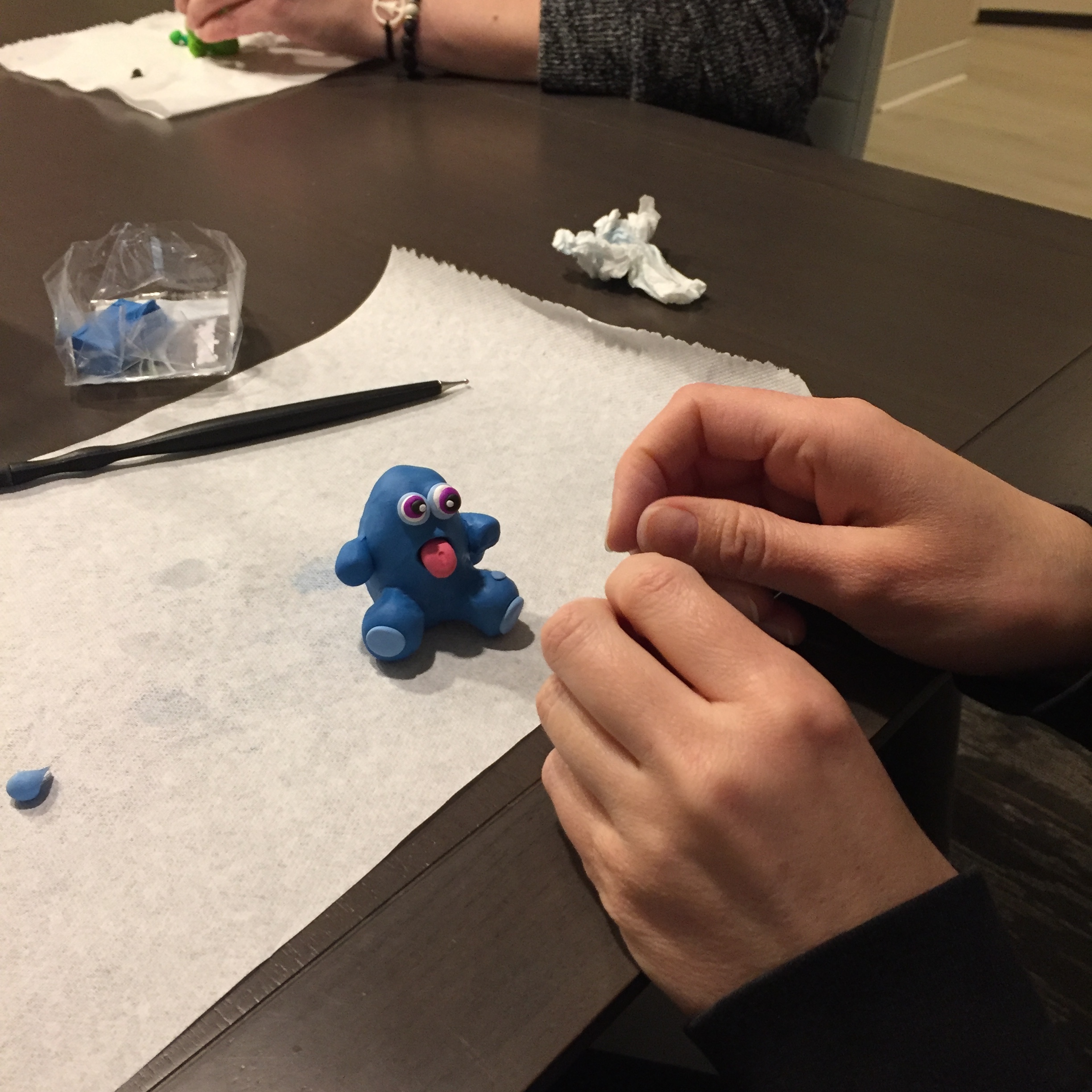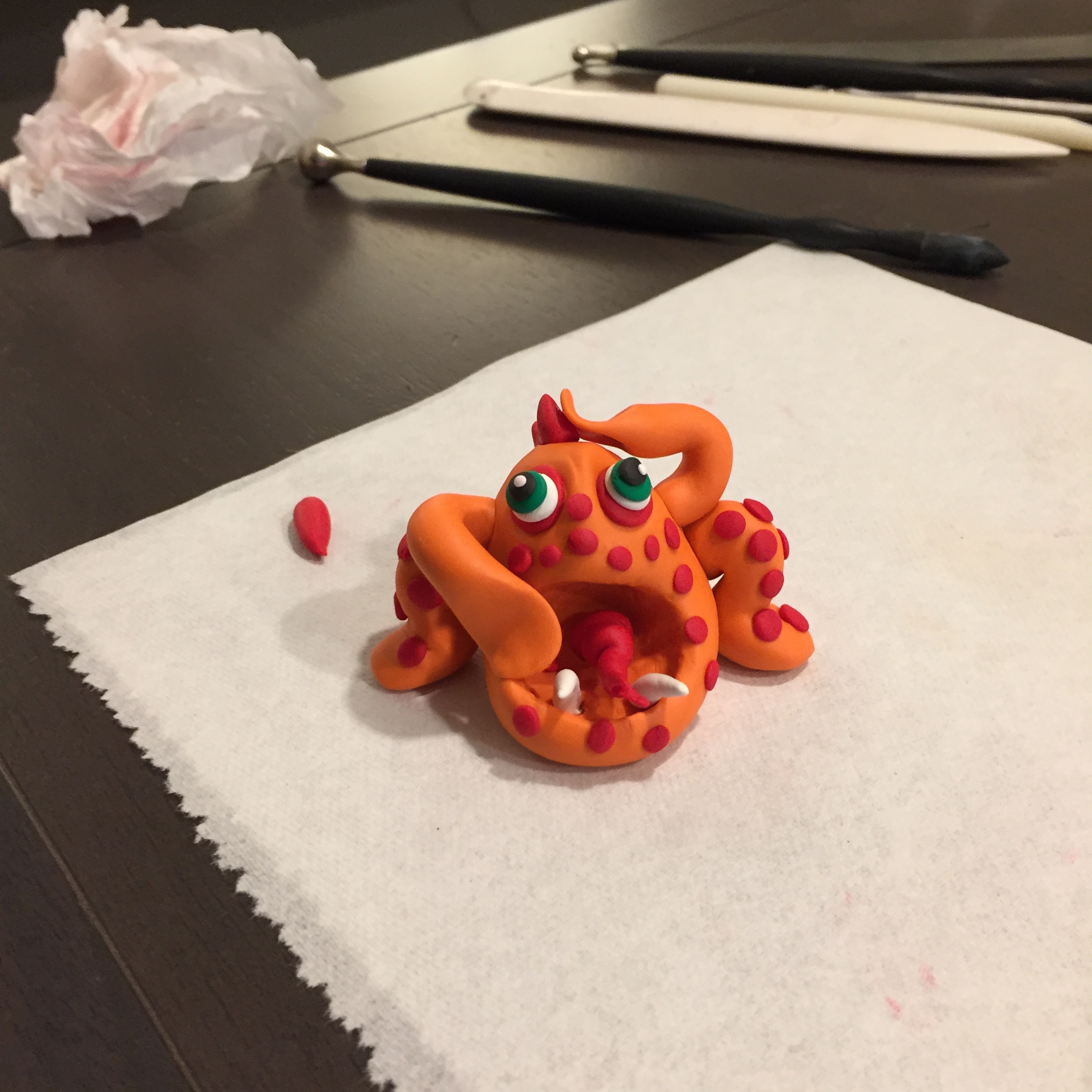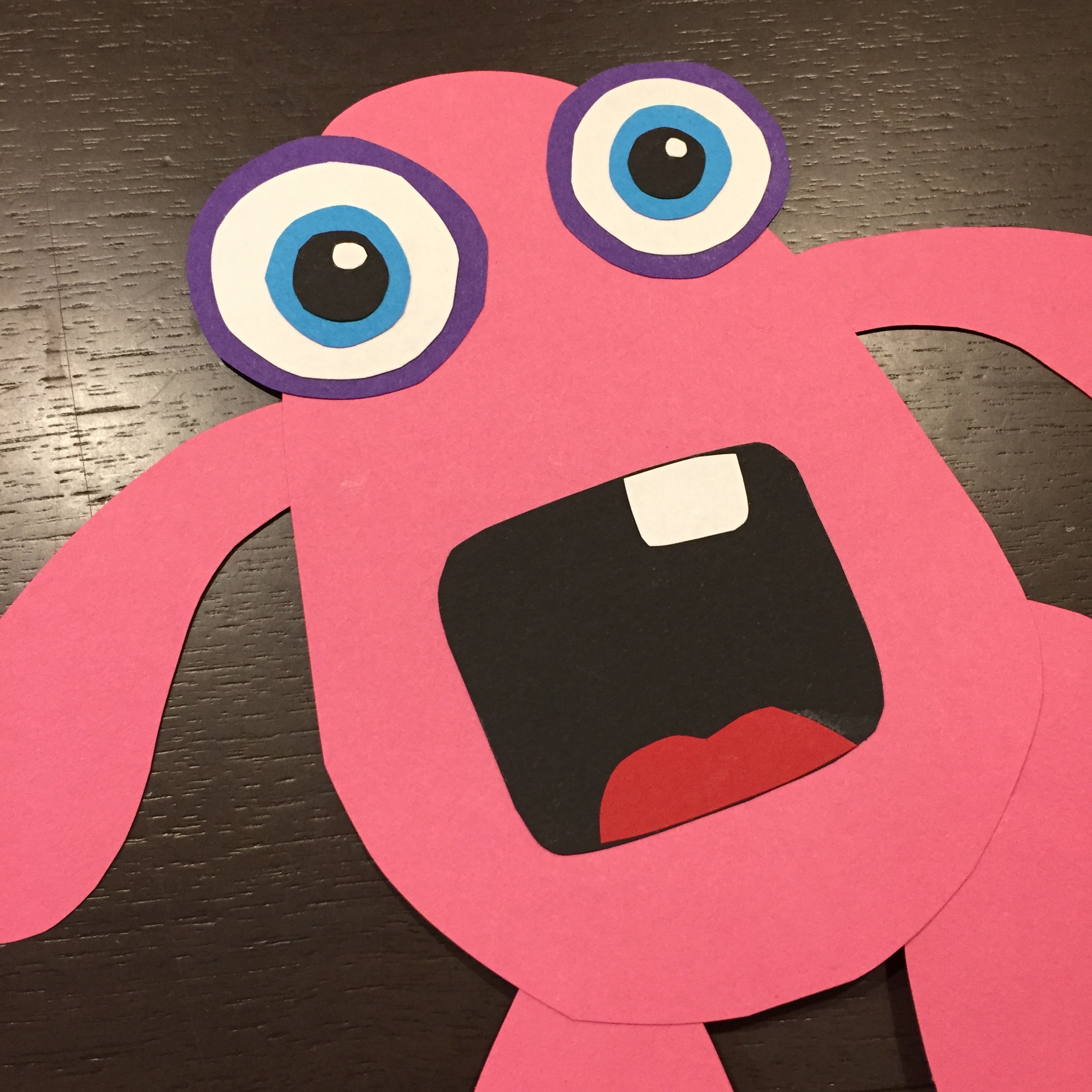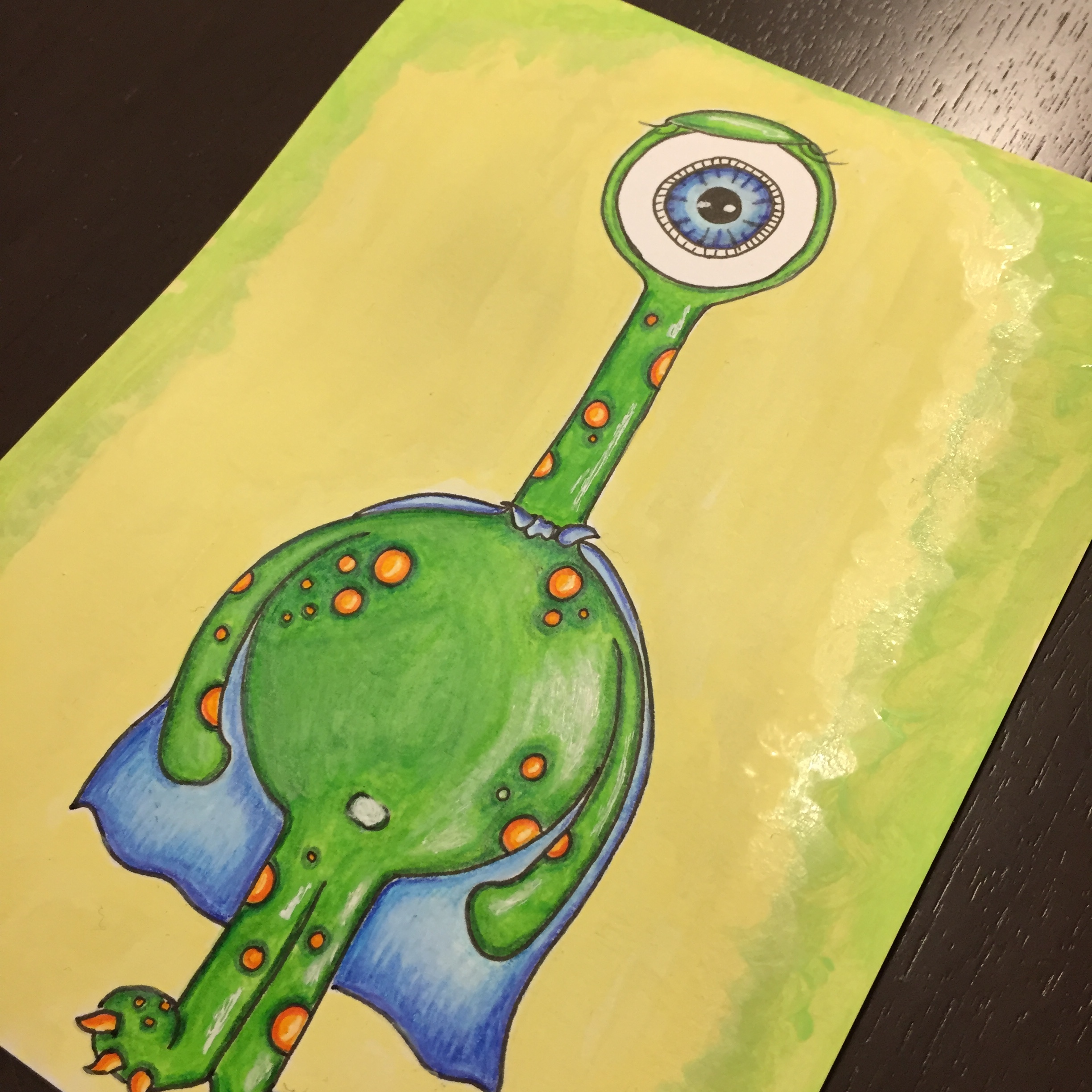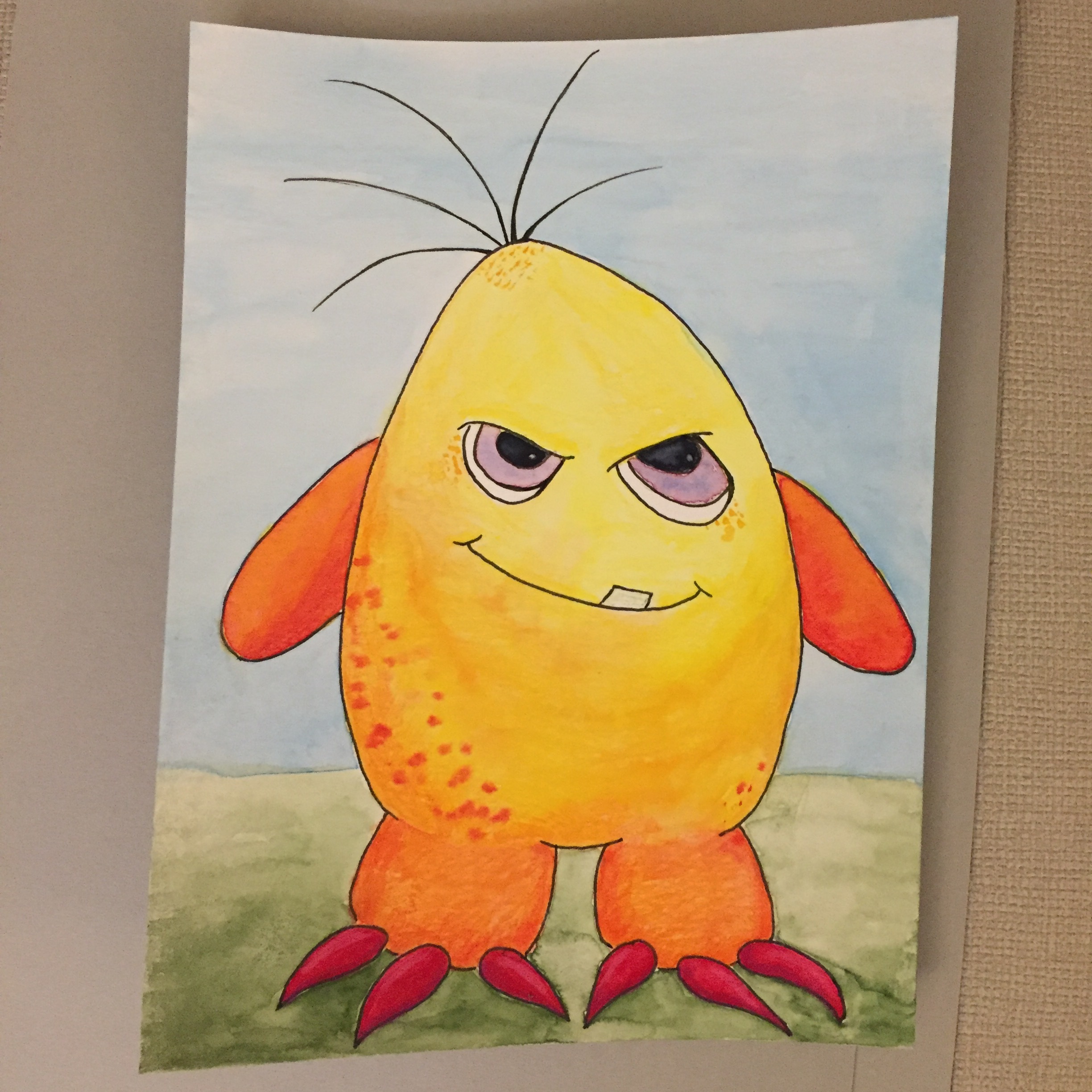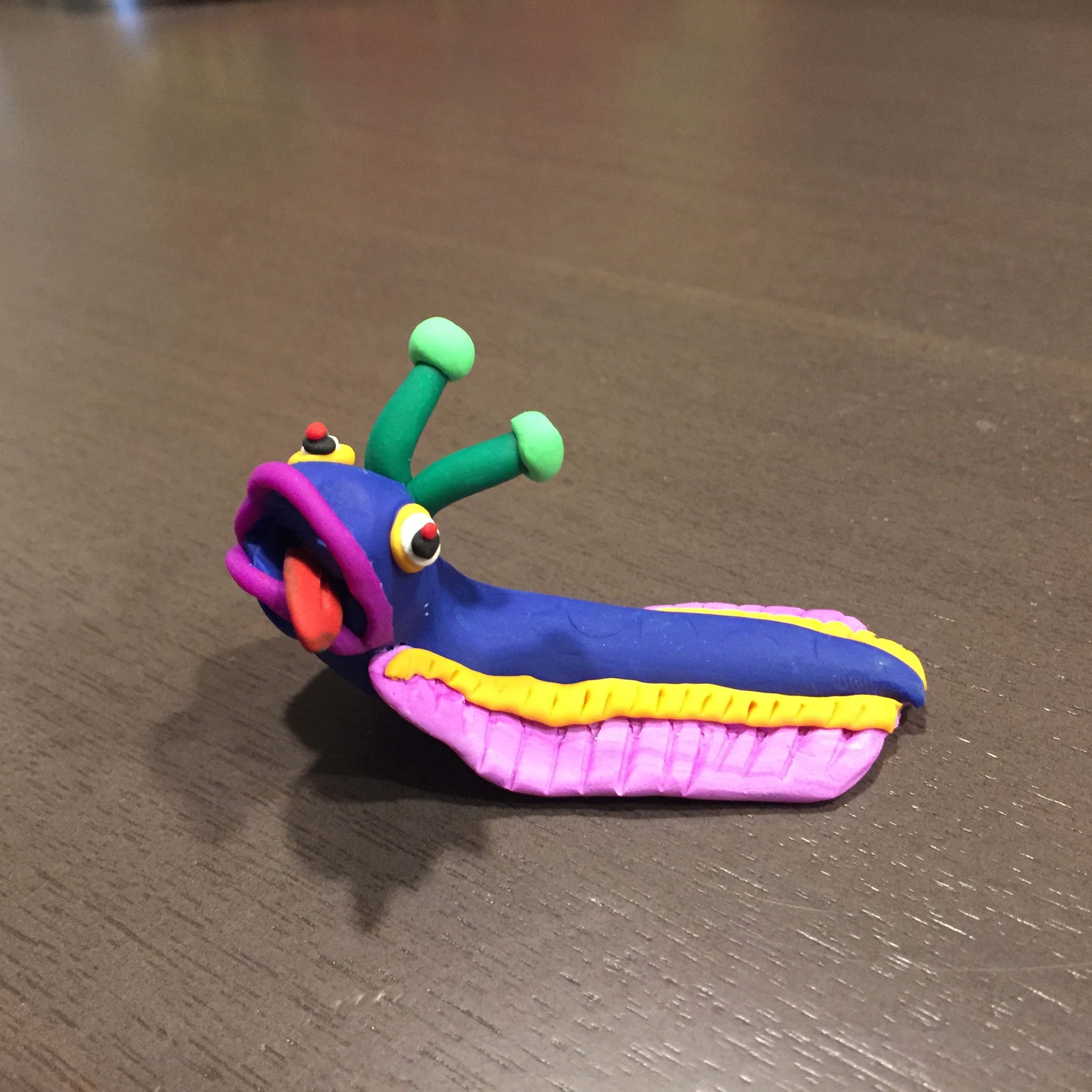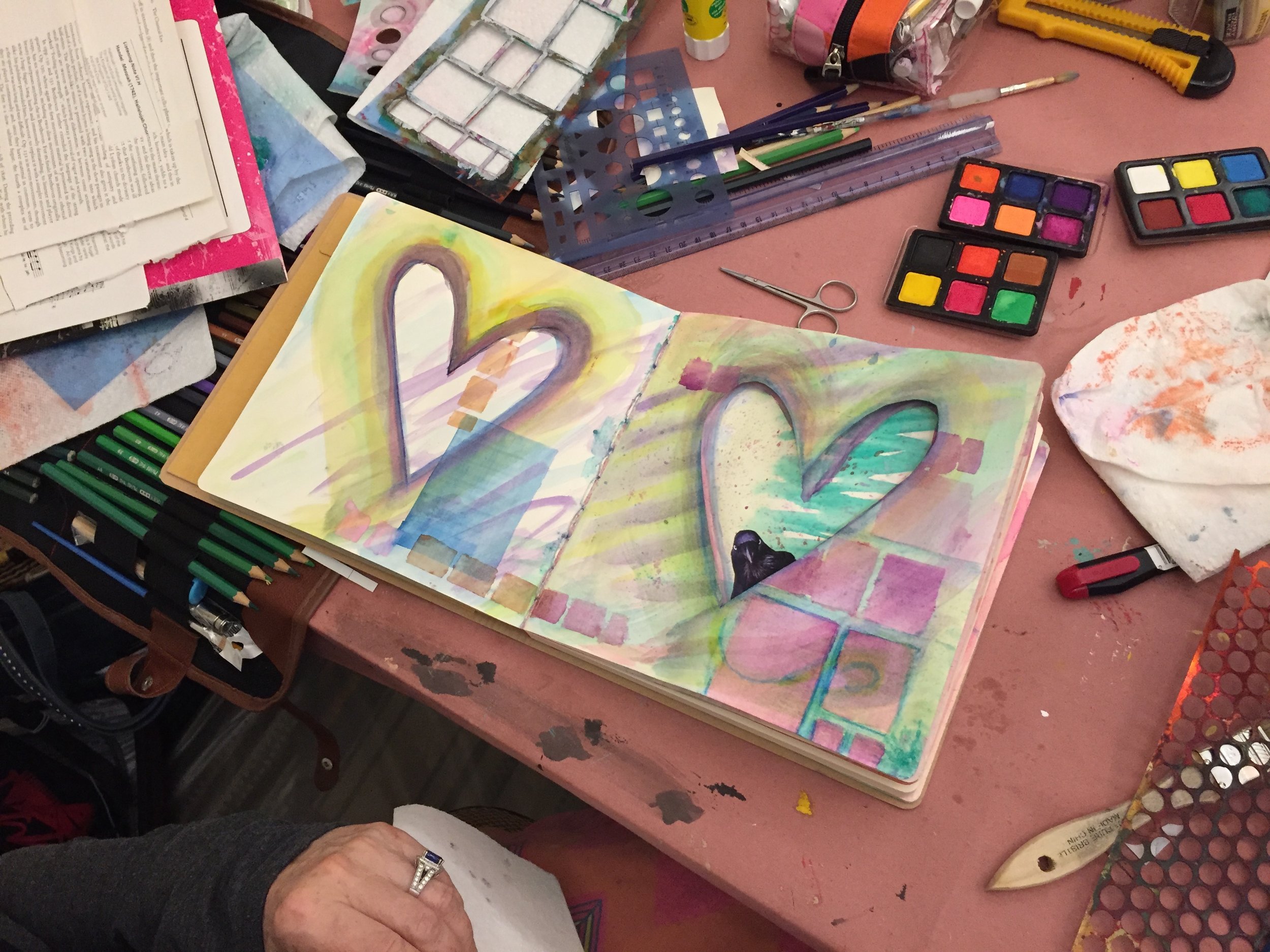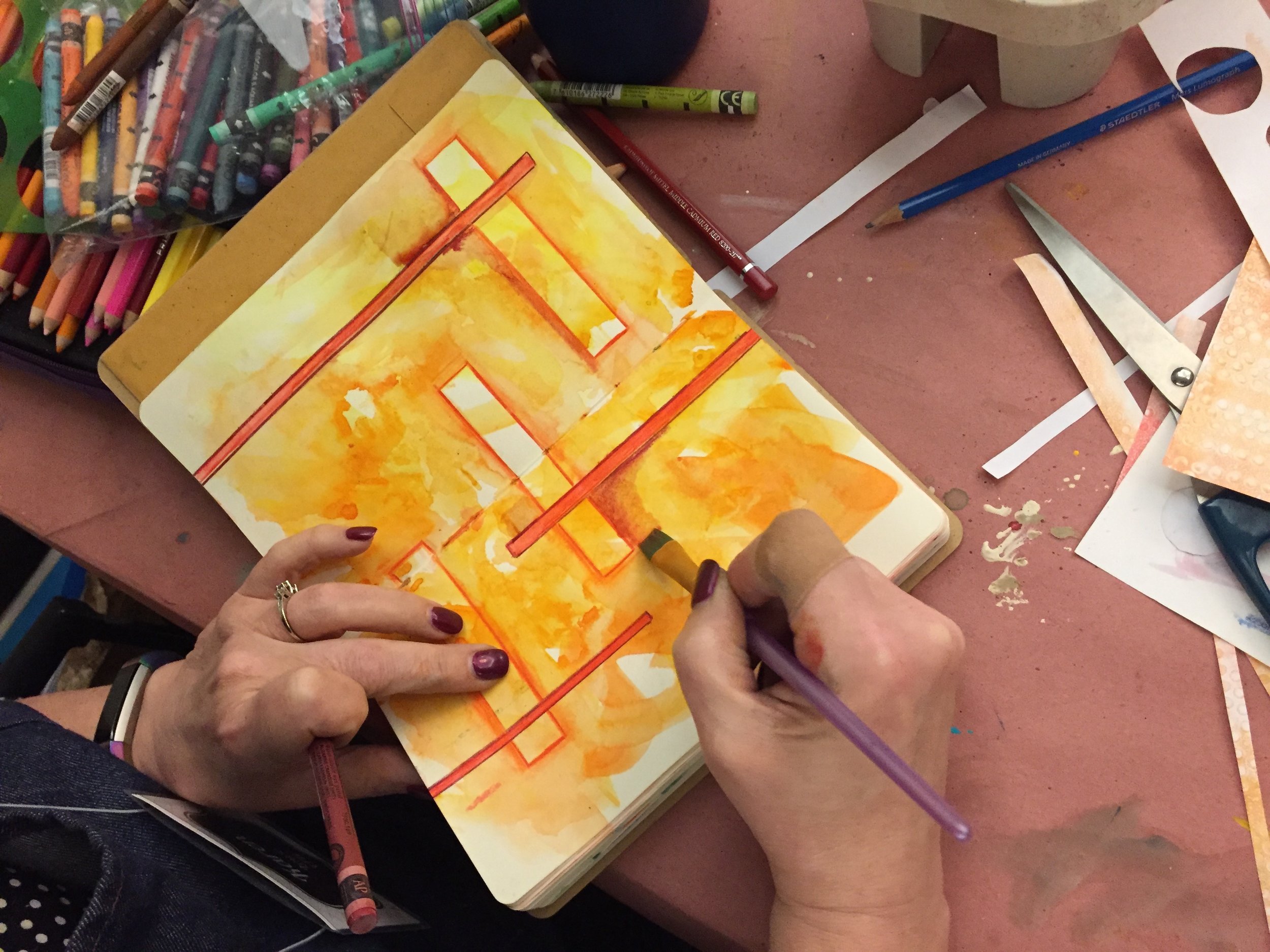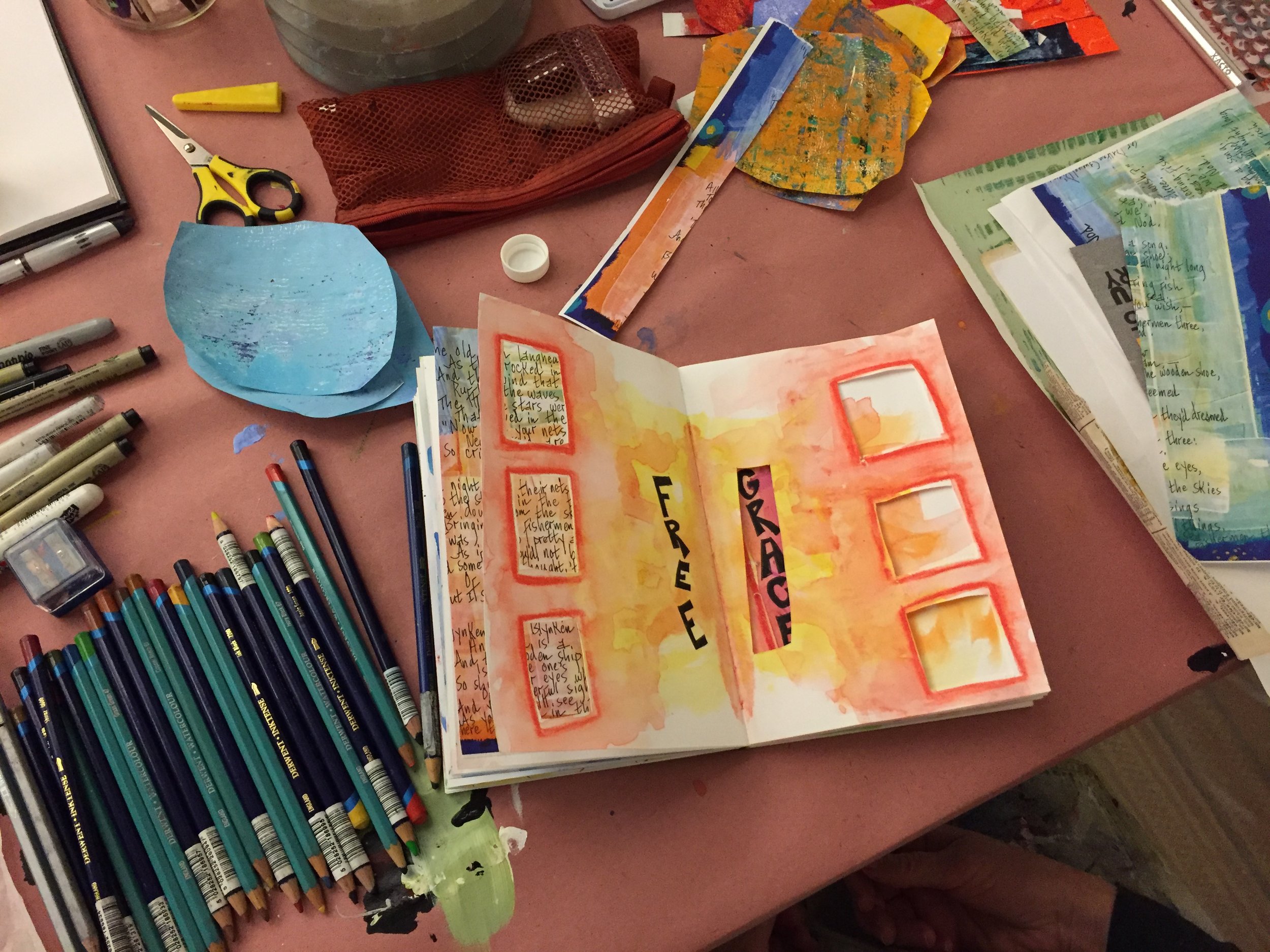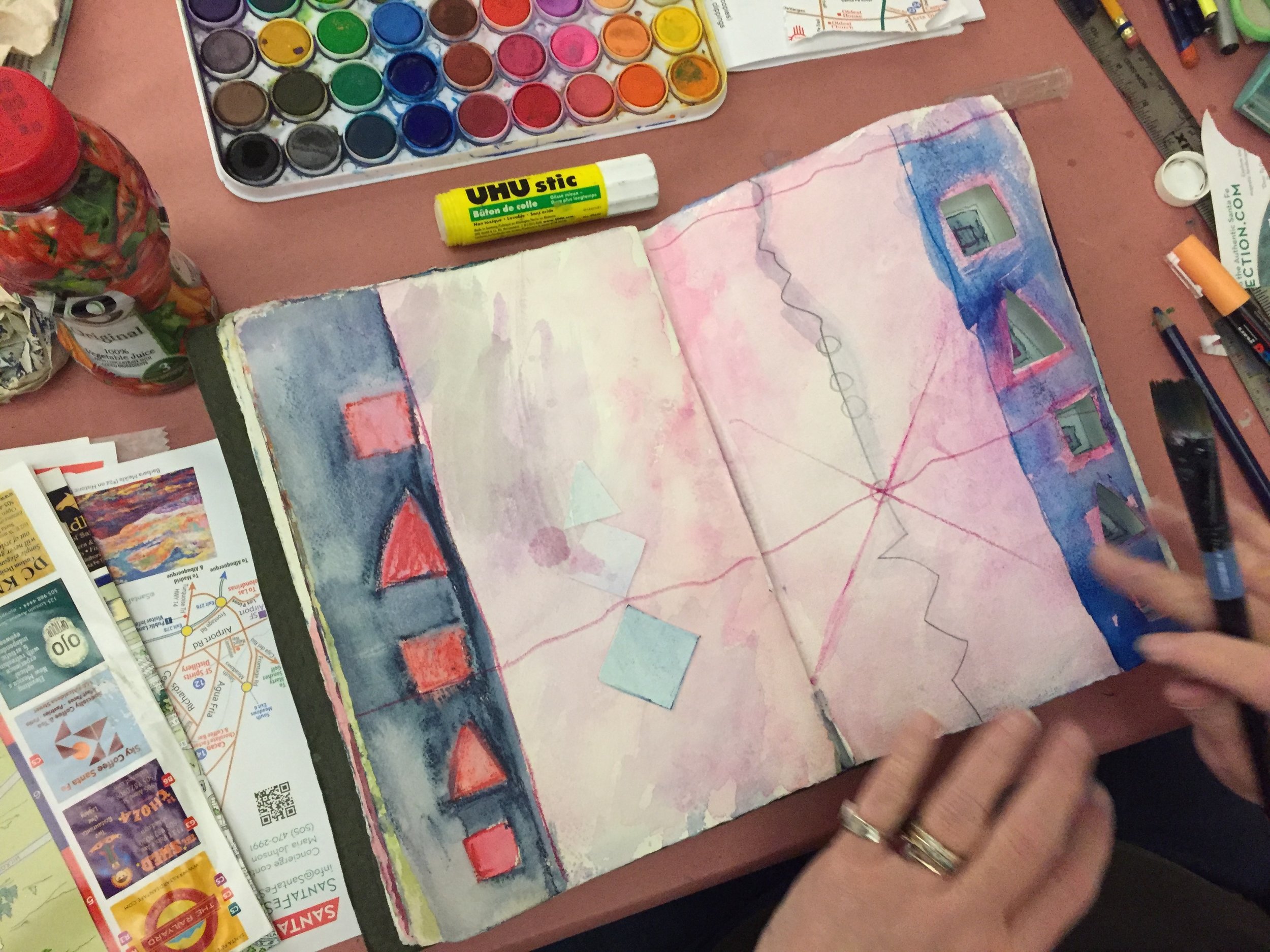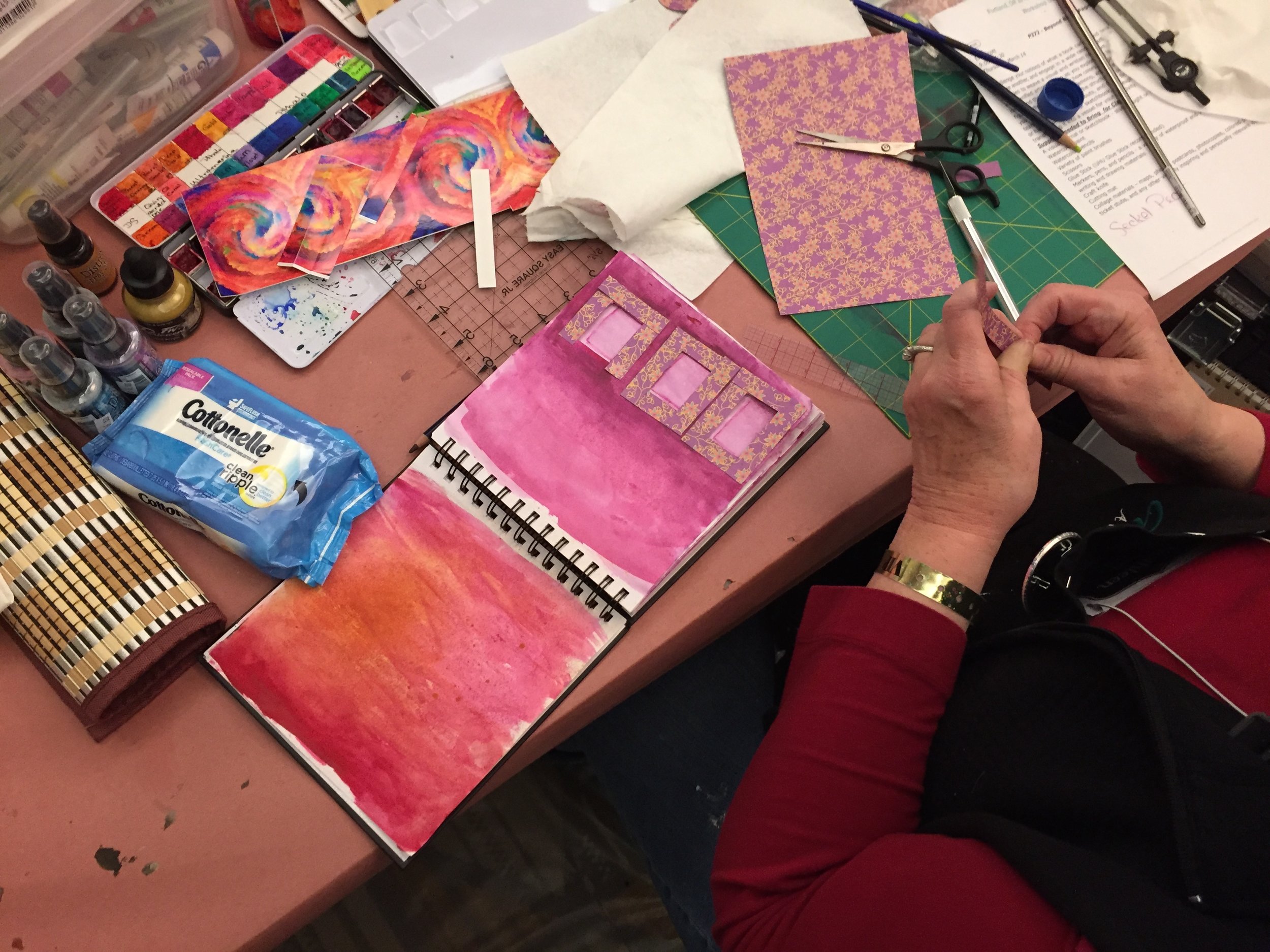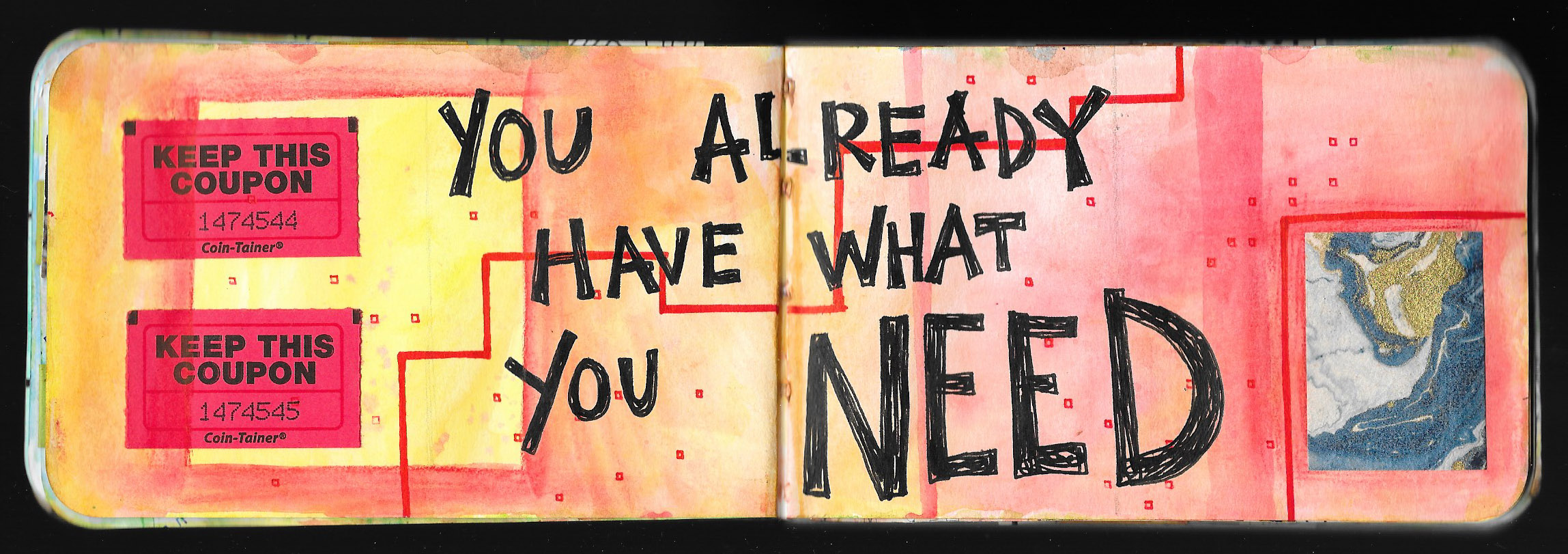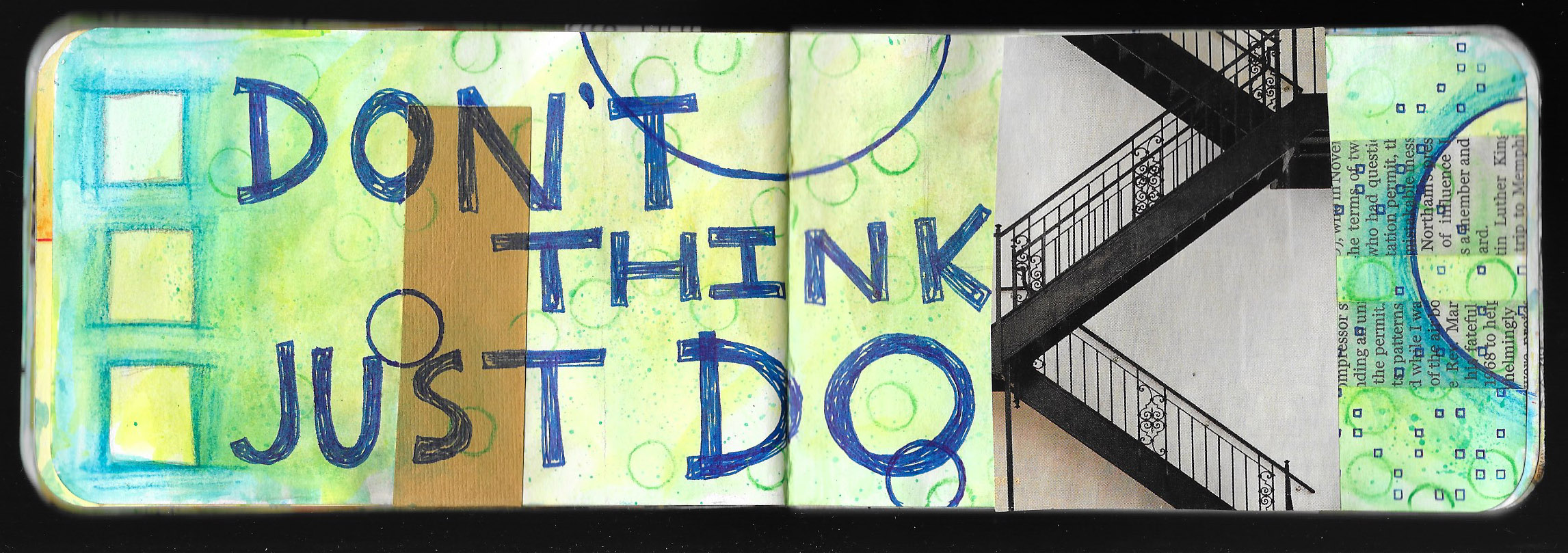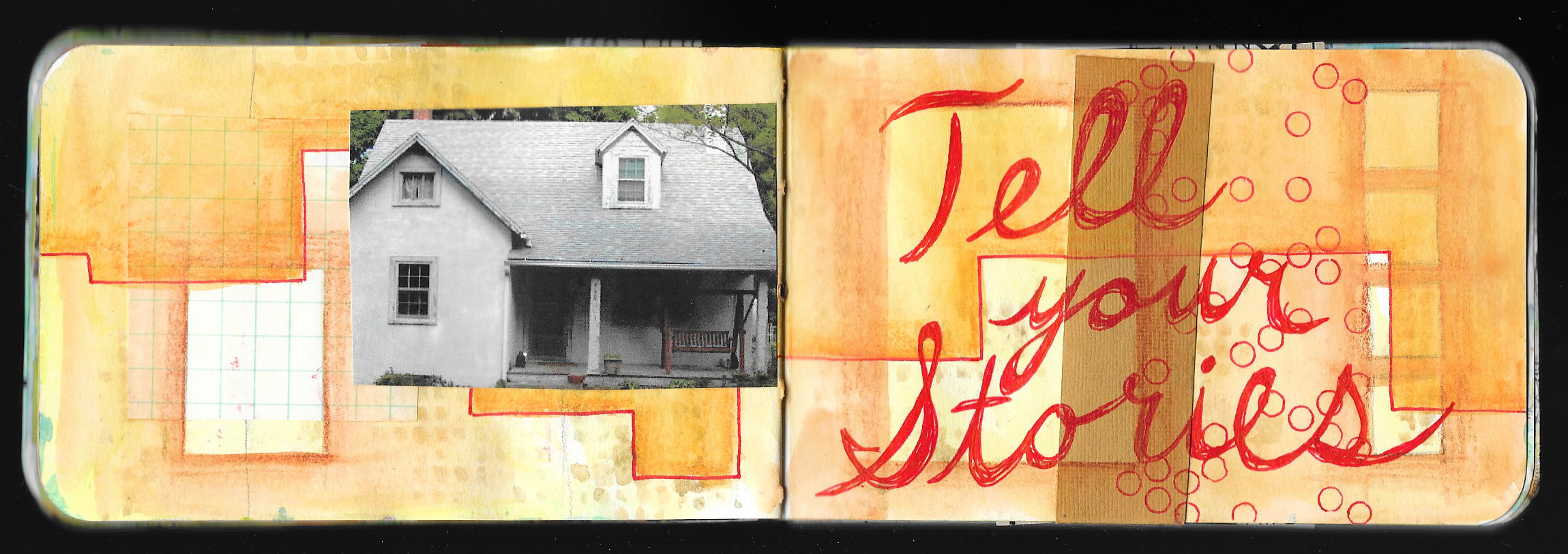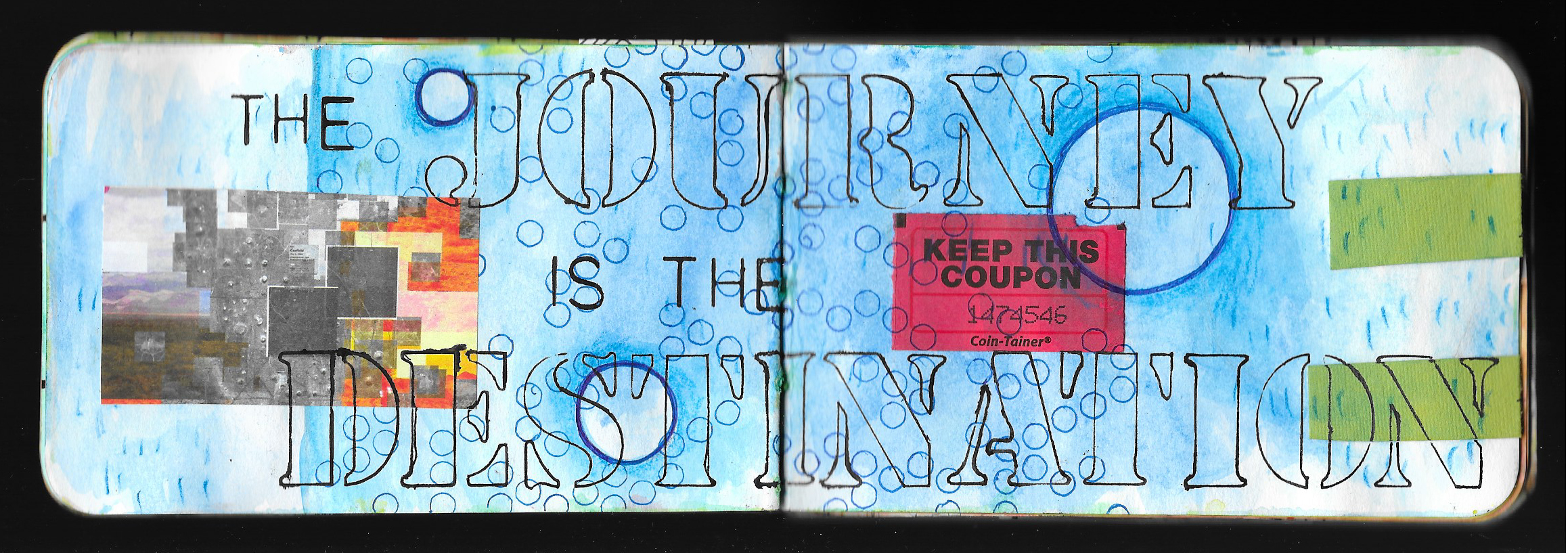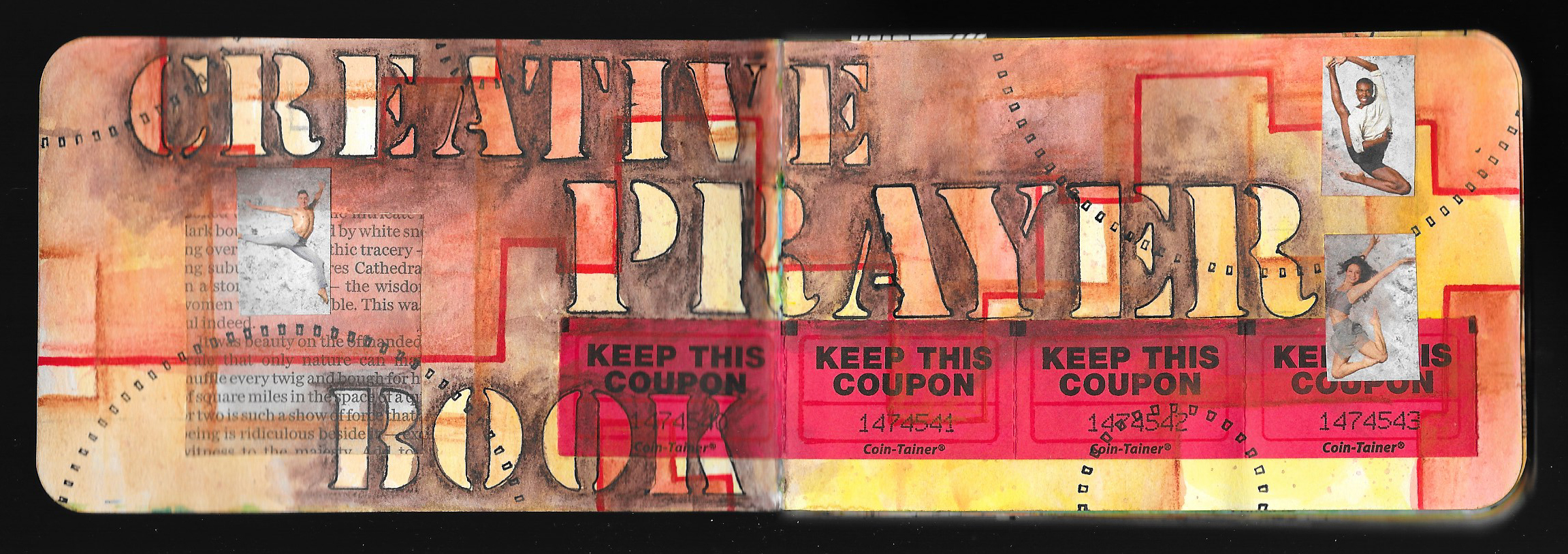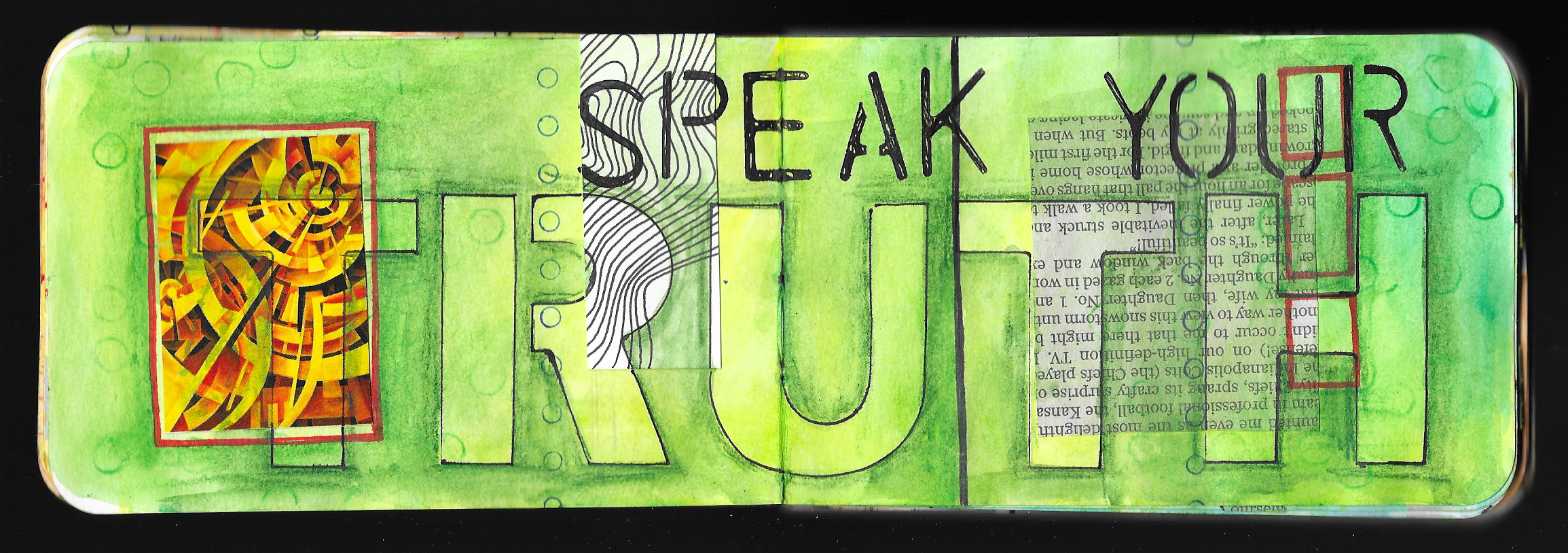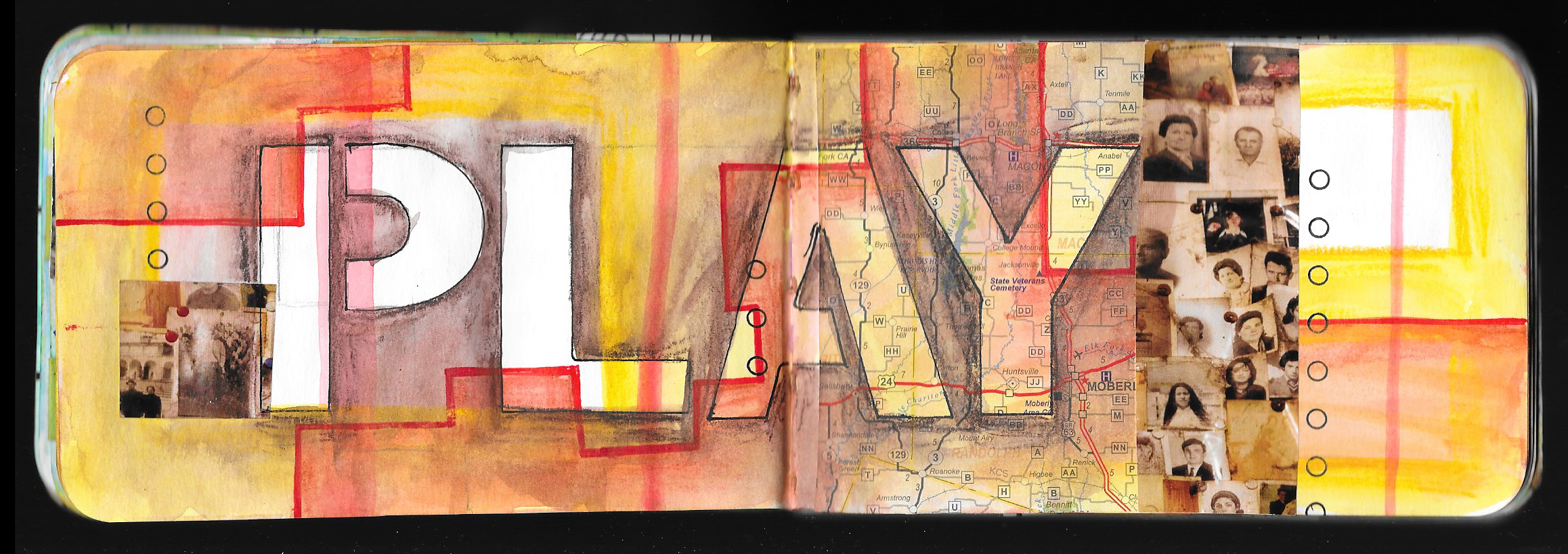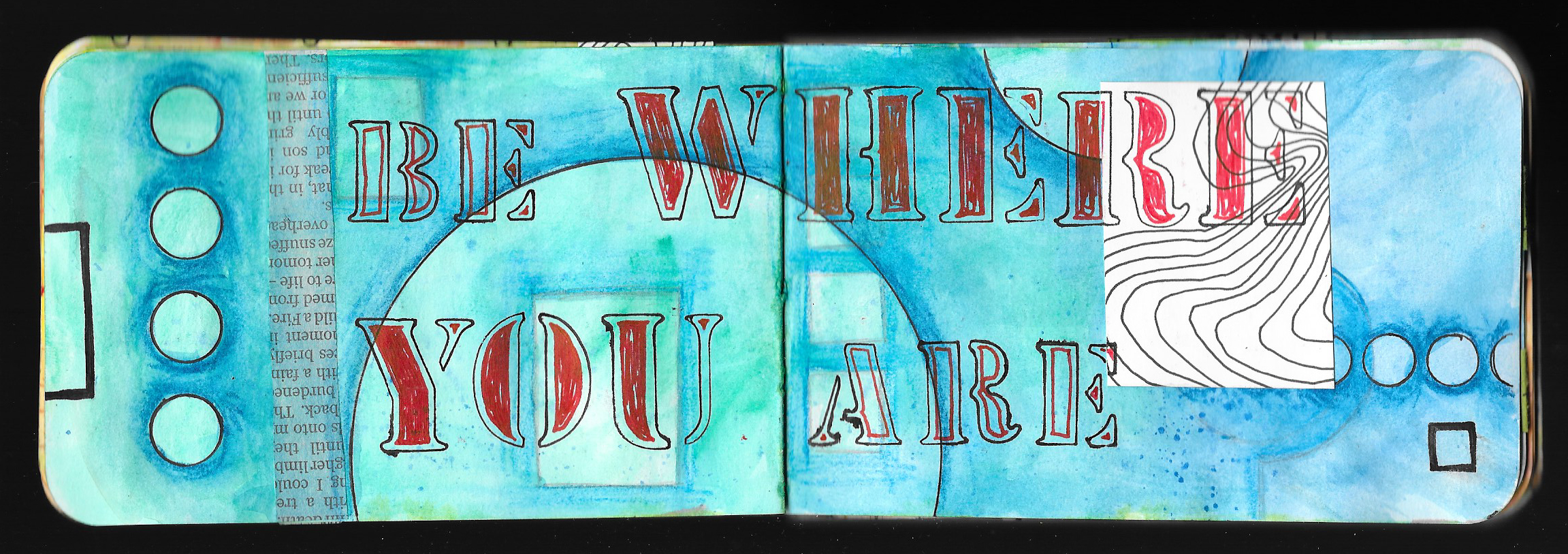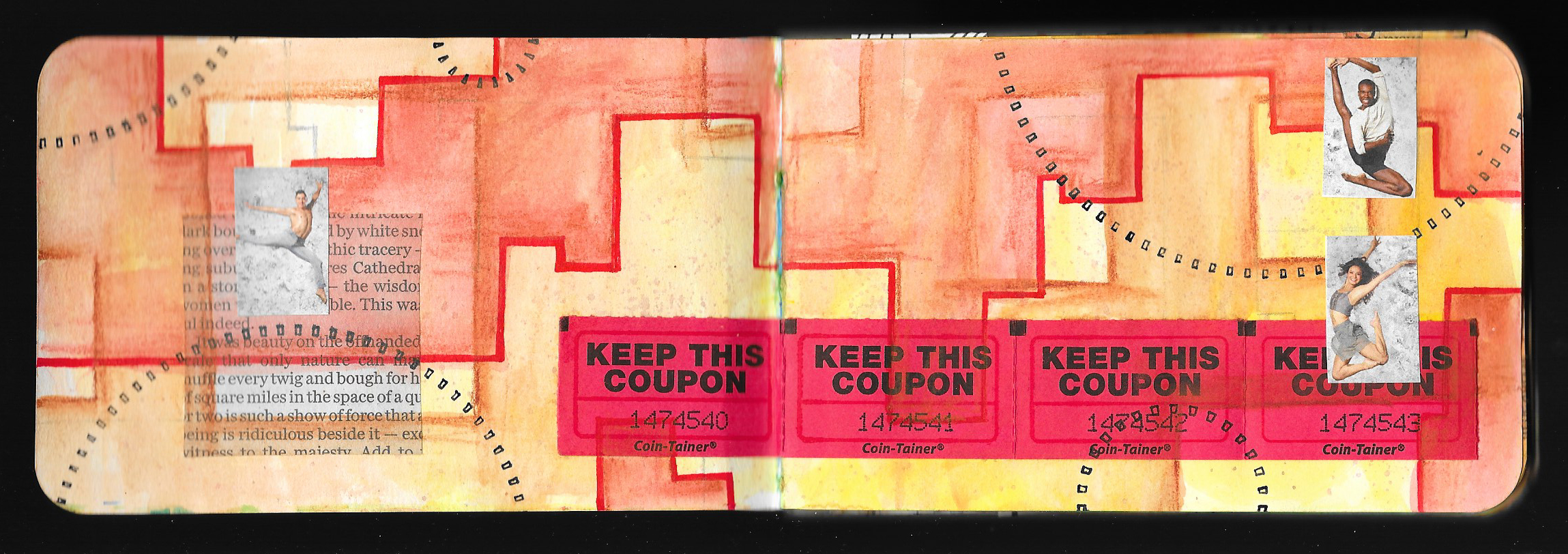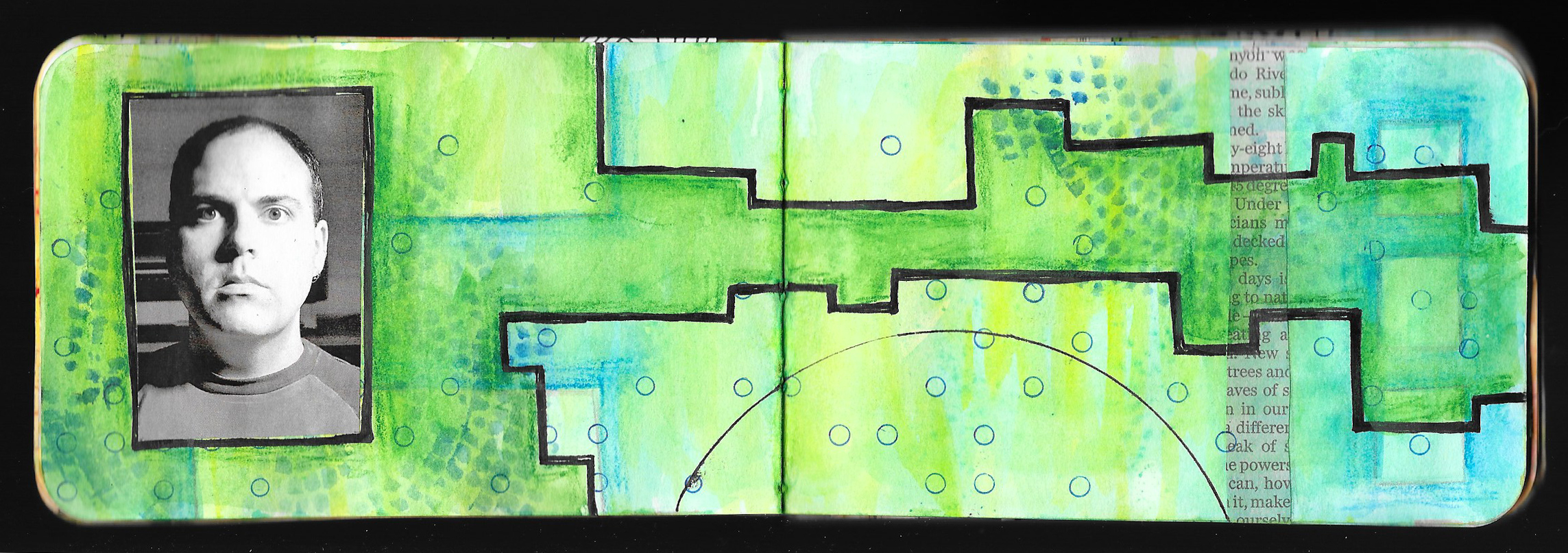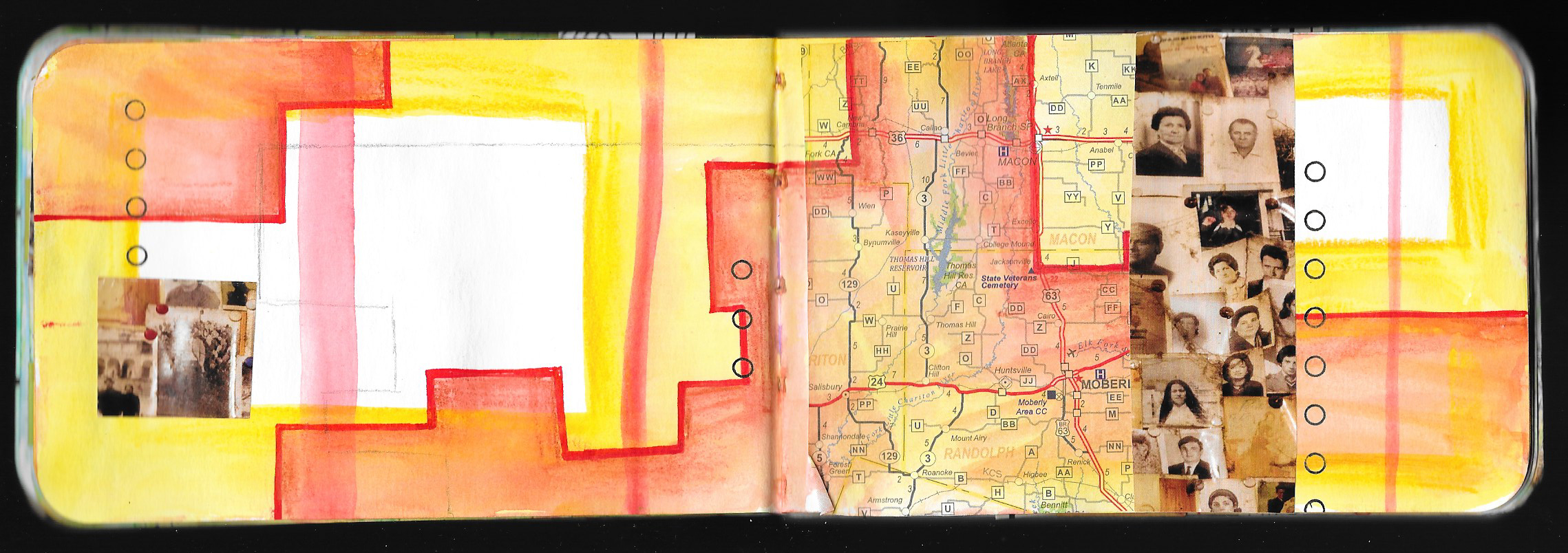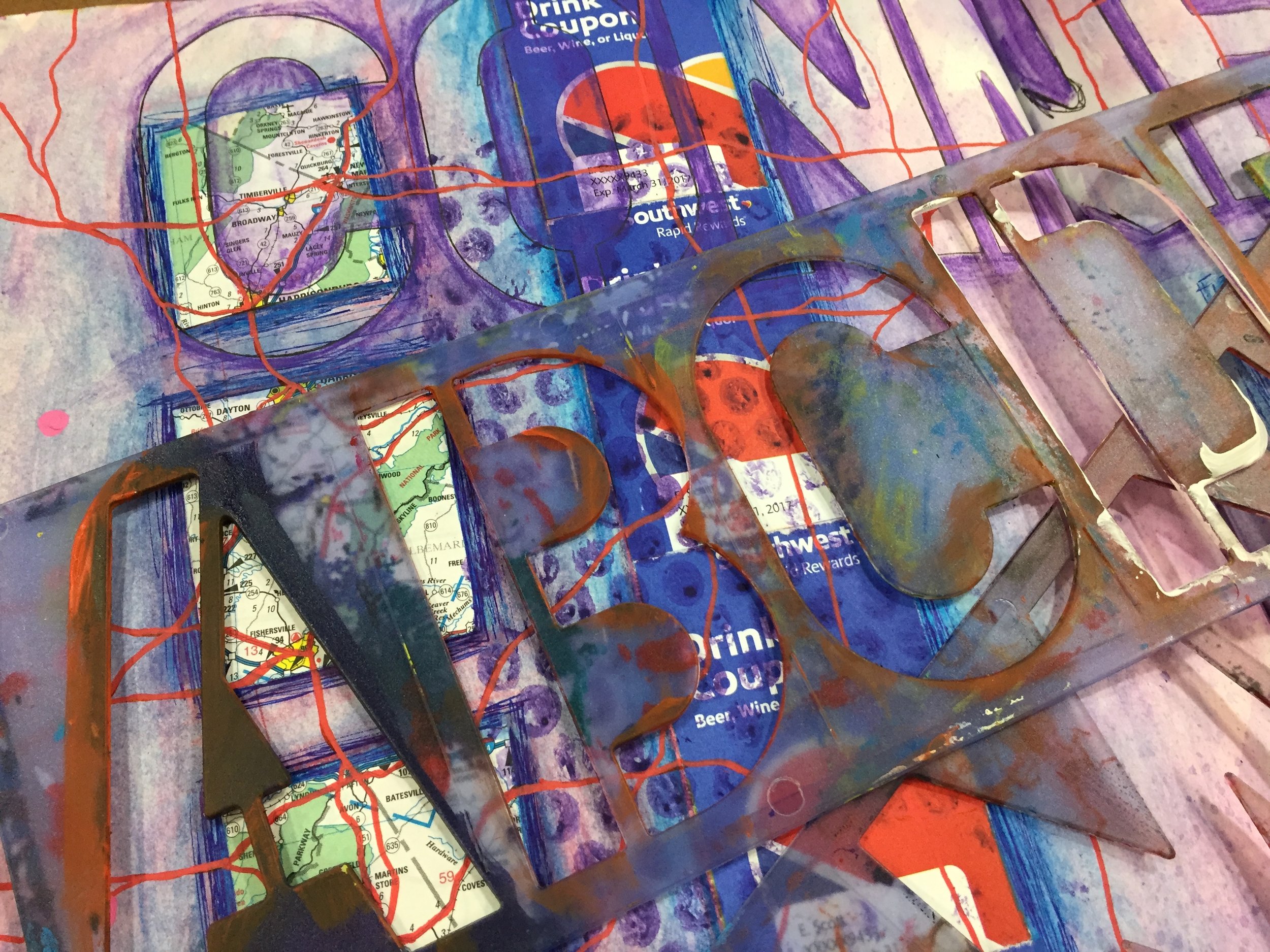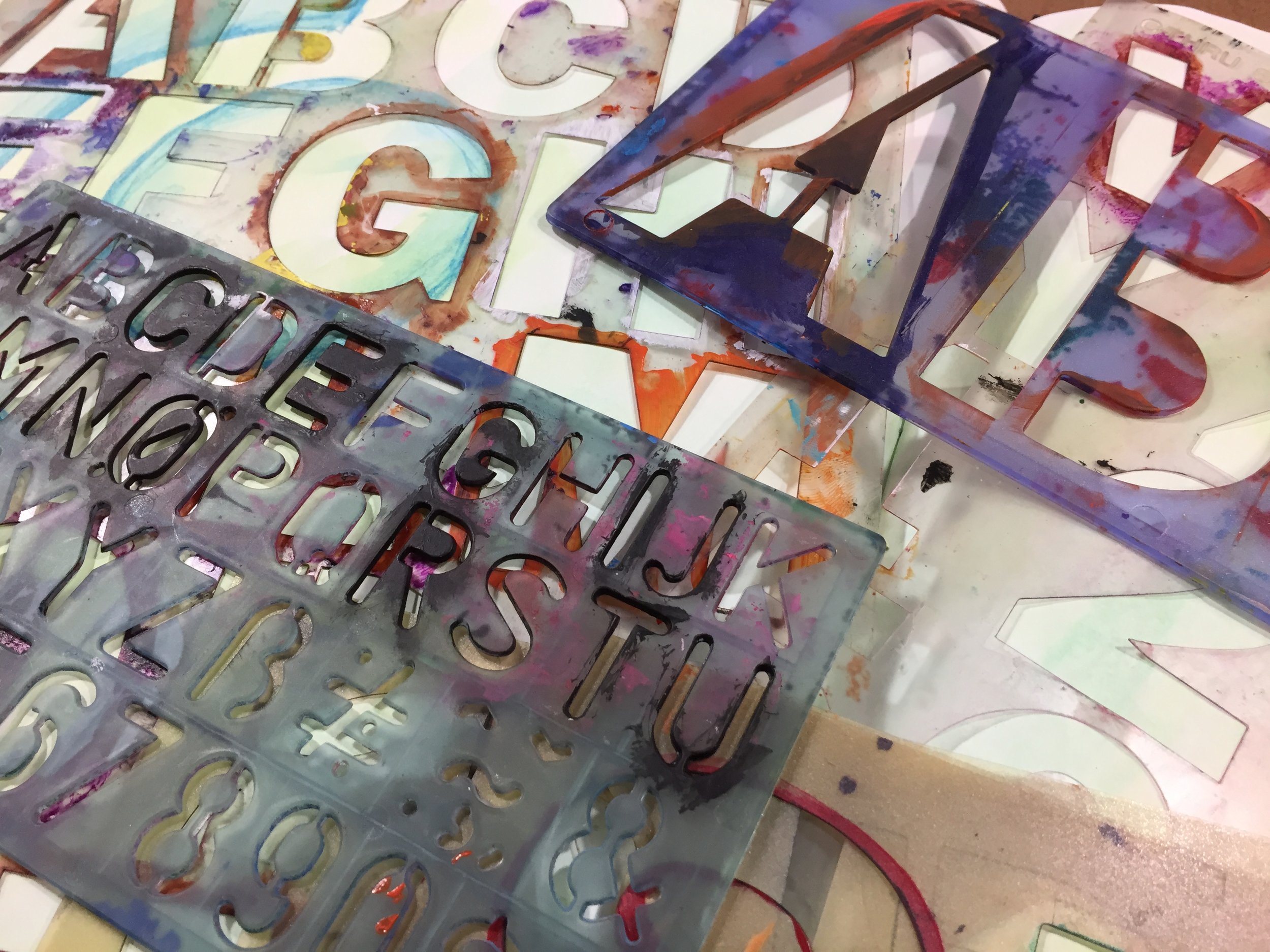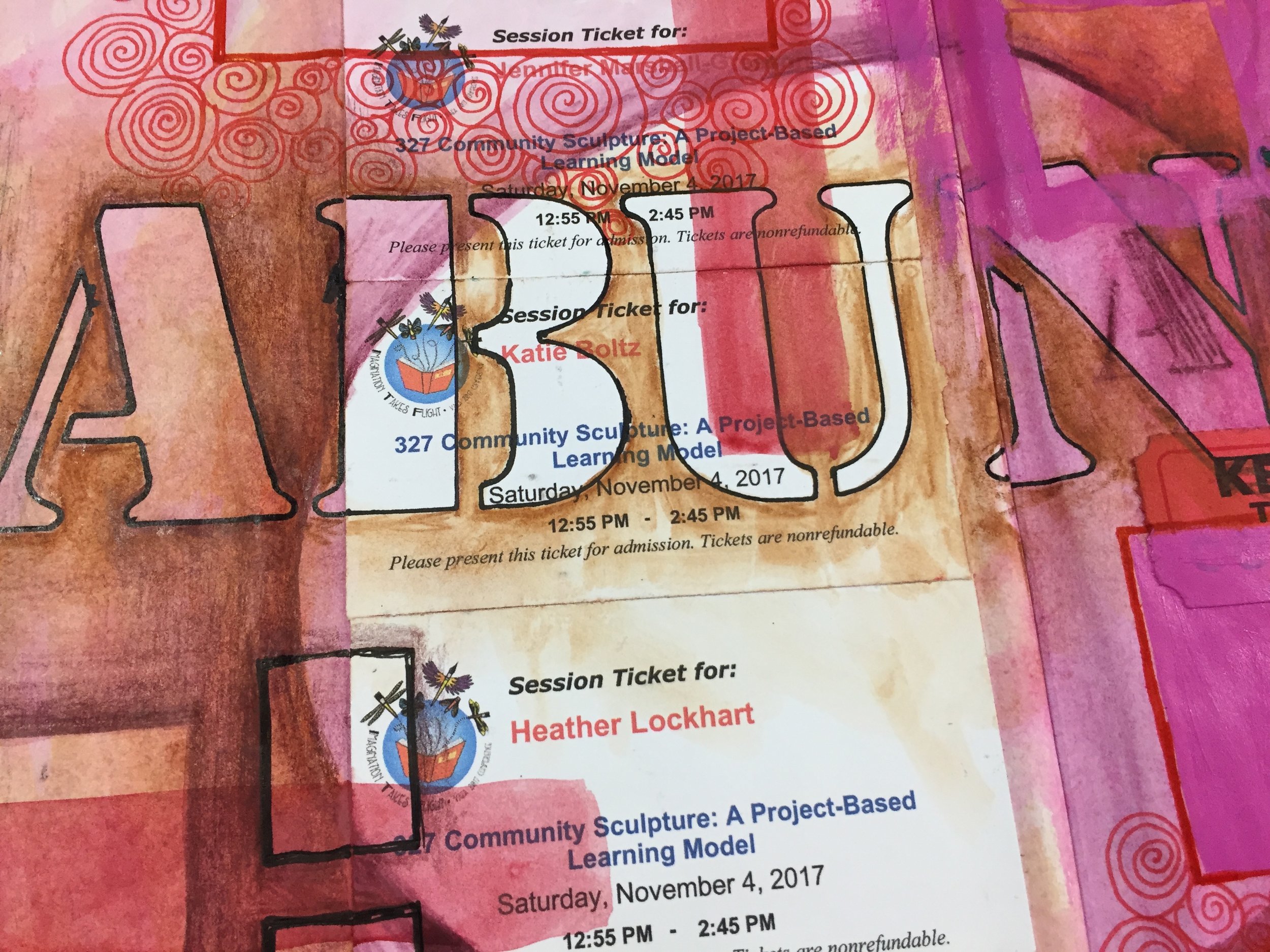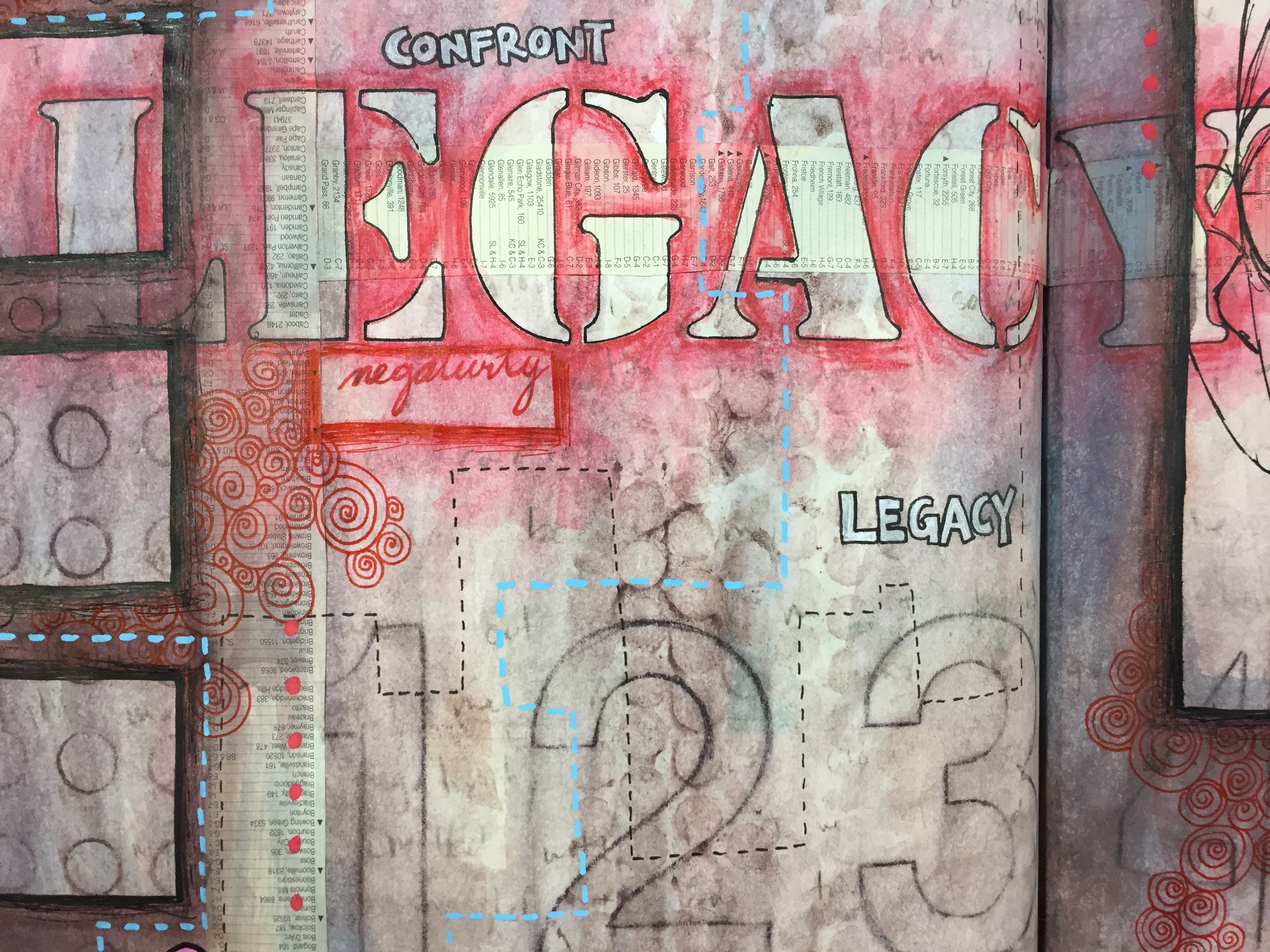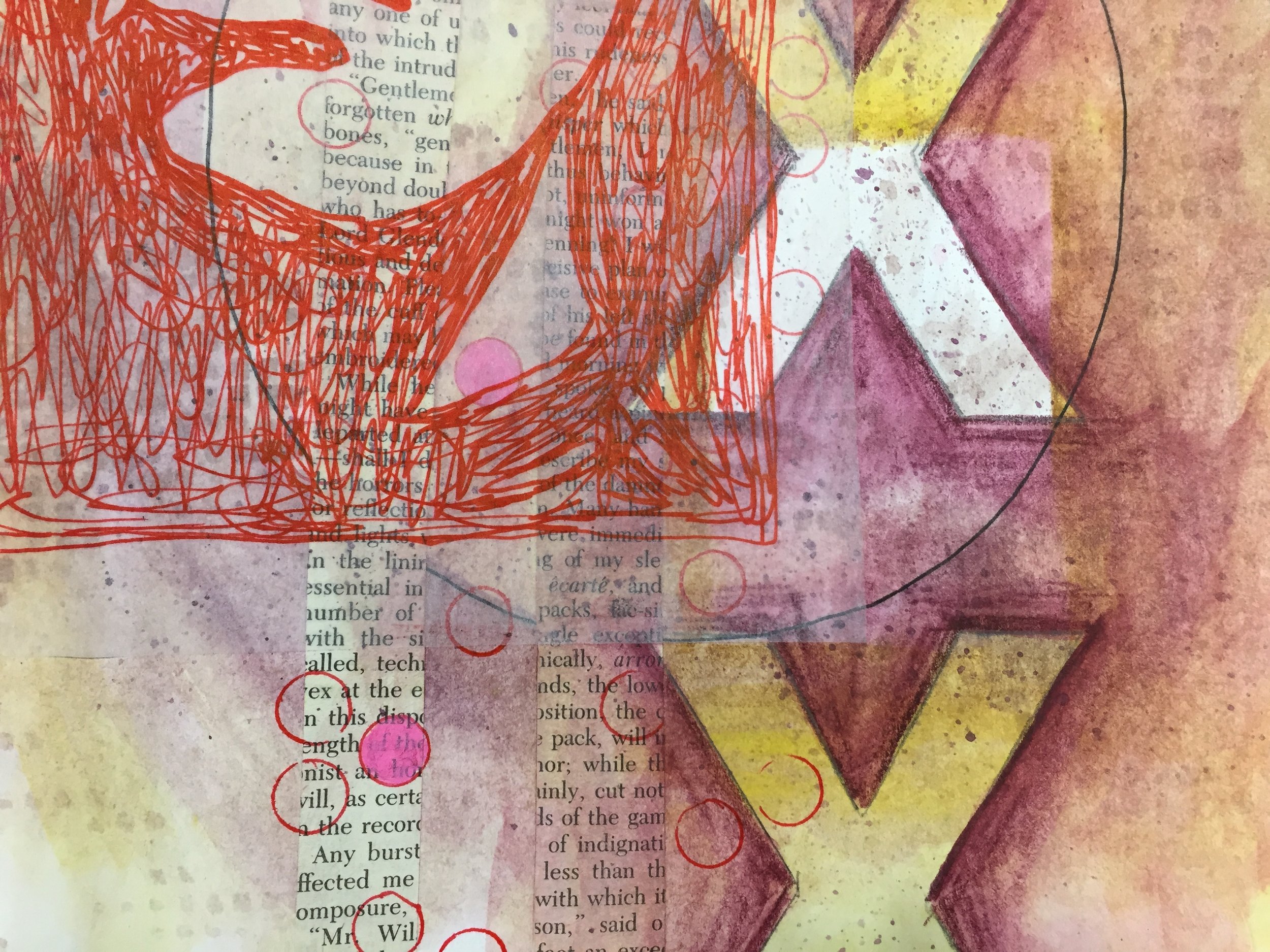Welcome to the tenth lesson of the Creative Prayer Book. We’ve focused on stenciling letters and words, using our own handwriting, and using found text, so this quick lesson is about drawing text. You might think about those block and bubble letters that you used when you were in school, and they’re perfect for this. But don’t limit yourself to just these two ideas. You can also use drawn script, fancy fonts, and graffiti letters and words. So, experiment with a variety.
If you’re not comfortable with drawing letters and words, use a pencil first, and perhaps practice on a piece of scrap paper first. If you’re a complete novice, one technique uses your own printed letters as a skeleton for the larger, drawn letter. Using a pencil, lightly write your word or words. Then, draw in the letters around the thin lines. You can make thin and thick letters this way. Erase your original, guide letter.
Of course, you can simply draw in the letters as you go, but be careful and pay attention to spelling. That’s why I like having the words and phrases drawn on a separate paper so that I can make sure that I am spelling things correctly. As you draw your letters, think about the outer shape of the letter, and if needed, use a pencil to lightly sketch in the lines.
I like to draw my letters with a pen, and I don’t worry about using a pencils. But I’m pretty confident with drawing words, but I still make spelling and placement mistakes.
Give drawing letters words and phrases a go!
I plan on just two more lessons in this series, and we’re done with the text and words, so if you still have space, feel free to stencil, write, draw, or find your text to fill in the spaces.
Thank you for joining me again, and as always, Happy Creating!
